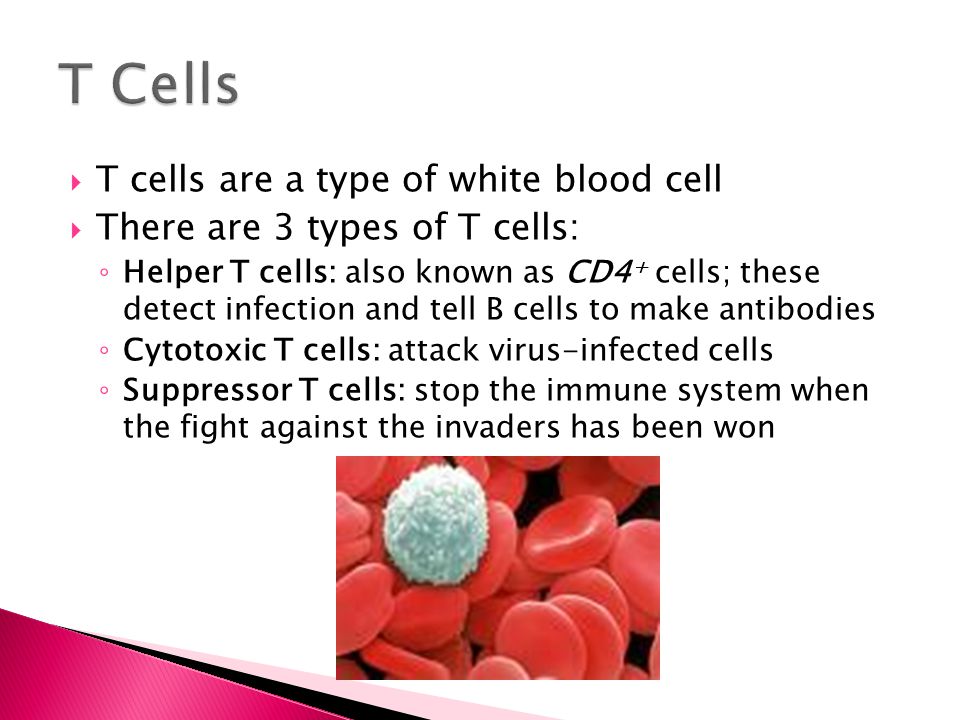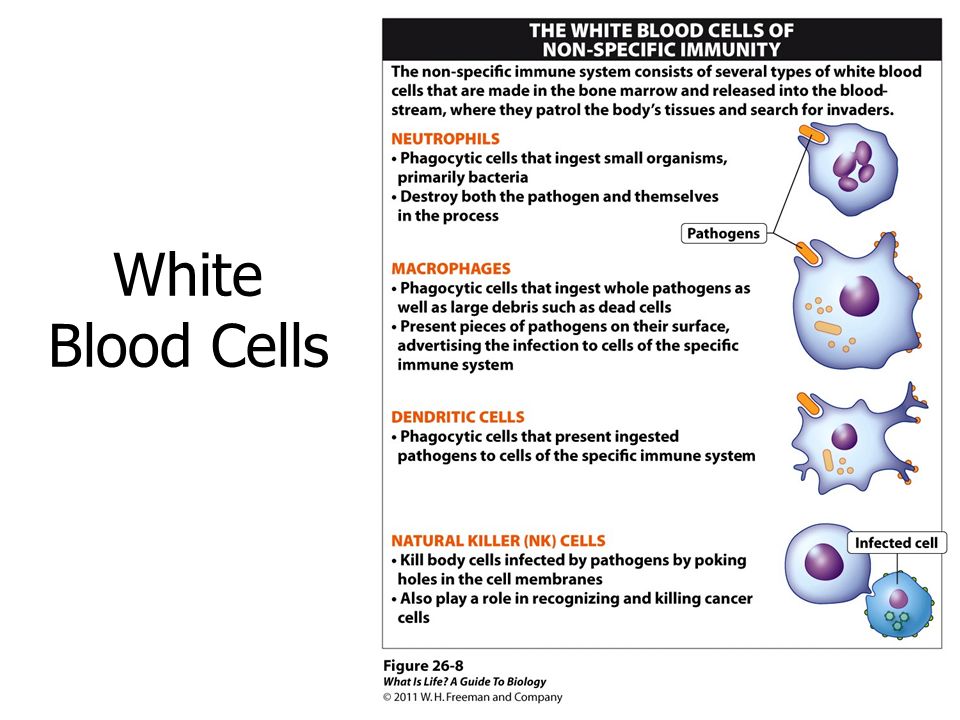Can dehydration cause low white blood cell count. 6 Possible Causes of Low White Blood Cell Count: Can Dehydration Be One
What are the potential reasons for a low white blood cell count. Is dehydration a possible cause of decreased WBC levels. How can you support healthy white blood cell production. When should you be concerned about low WBC counts.
Understanding White Blood Cells and Their Importance
White blood cells, also known as leukocytes, are the cornerstone of our immune system. These microscopic warriors circulate through our blood and lymphatic systems, ever-vigilant in their defense against foreign invaders. But what happens when their numbers drop below normal levels? Can something as common as dehydration cause a low white blood cell count?
To answer these questions, we first need to understand the role of white blood cells and what constitutes a “normal” count.
The Five Types of White Blood Cells
Our white blood cell count is actually composed of five different types of cells, each with its own specialized function:

- Neutrophils: The first responders, making up 60-70% of total WBCs
- Lymphocytes: B and T cells that produce antibodies and destroy infected cells
- Monocytes: Large cells that engulf and digest pathogens
- Eosinophils: Combat parasites and are involved in allergic responses
- Basophils: Release histamine during inflammatory reactions
Among these, neutrophils play a particularly crucial role. They are often the first to arrive at the site of an infection or injury, controlling the influx of other immune cells and engulfing pathogens. Their short lifespan of 5 hours to a few days means that our body is constantly producing new neutrophils to maintain adequate levels.
What’s Considered a Normal White Blood Cell Count?
A normal white blood cell count typically falls within the range of 4,000 to 11,000 cells per microliter of blood. This is often reported as 4.0-11.0 thousands/μL on lab results. For neutrophils specifically, a normal count is between 1,500 and 7,800 cells/μL.
It’s important to note that these ranges can vary slightly depending on the laboratory conducting the test. Additionally, WBC counts can fluctuate throughout the day and in response to various factors, so a single low reading may not necessarily be cause for concern.

Can Dehydration Cause a Low White Blood Cell Count?
While dehydration can affect various aspects of our health, it does not directly cause a low white blood cell count. However, severe dehydration can lead to a condition called hemoconcentration, where the blood becomes more concentrated due to a lack of fluid. This can potentially result in an artificially elevated WBC count, as the same number of cells are present in a smaller volume of blood.
Conversely, when a person rehydrates after being dehydrated, it may appear as though their WBC count has decreased, when in reality it’s simply returning to normal levels as blood volume is restored. This is why it’s crucial to be well-hydrated before having blood tests performed to ensure accurate results.
6 Possible Causes of a Low White Blood Cell Count
While dehydration isn’t a direct cause of low WBC counts, there are several factors that can lead to this condition. Let’s explore six possible causes:
1. Genetic Predisposition
Some individuals naturally have lower “resting state” levels of white blood cells due to genetic variations. This is particularly common among people of African, Middle Eastern, and certain European descents. If you consistently have WBC counts just below the normal range but don’t experience frequent illnesses, this could be your natural baseline.

2. Bone Marrow Disorders
Since the majority of white blood cells are produced in the bone marrow, disorders affecting this tissue can lead to decreased WBC production. Conditions such as leukemia, myelodysplastic syndromes, and aplastic anemia can interfere with normal blood cell formation.
3. Autoimmune Diseases
In some autoimmune conditions, the body mistakenly attacks its own white blood cells or the tissues that produce them. Lupus and rheumatoid arthritis are examples of autoimmune diseases that can sometimes cause low WBC counts.
4. Infections
Certain viral infections, such as HIV, hepatitis, and influenza, can temporarily or chronically suppress white blood cell production. In some cases, bacterial infections can also lead to decreased WBC counts, especially if they overwhelm the immune system.
5. Medications
Various medications can impact white blood cell production or survival. Chemotherapy drugs, some antibiotics, and certain psychiatric medications are known to potentially cause low WBC counts as a side effect.
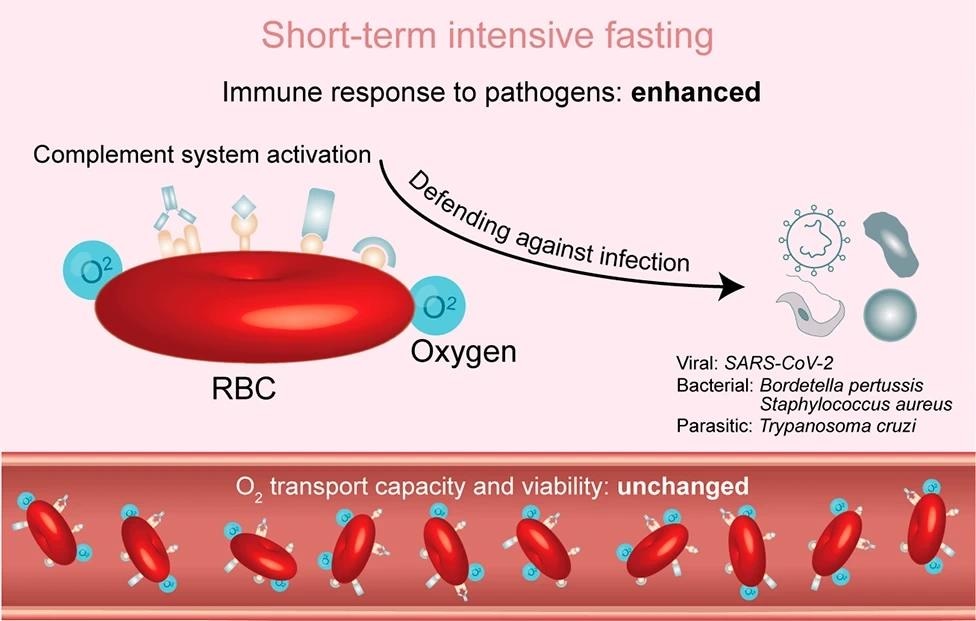
6. Nutritional Deficiencies
Severe deficiencies in nutrients crucial for blood cell production, such as vitamin B12, folate, and copper, can result in decreased WBC counts. Malnutrition or conditions affecting nutrient absorption, like celiac disease, can contribute to these deficiencies.
When Should You Be Concerned About Low WBC Counts?
A single low WBC reading is not necessarily cause for alarm. WBC counts can fluctuate throughout the day and in response to various factors. However, consistent readings below 3.5 thousands/μL, especially if they drop below 3.0 thousands/μL, warrant discussion with a healthcare provider.
Symptoms that may indicate a clinically significant low WBC count include:
- Frequent or prolonged infections
- Slow wound healing
- Unexplained fever
- Fatigue or weakness
- Swollen lymph nodes
If you experience these symptoms along with low WBC counts, it’s important to seek medical evaluation to determine the underlying cause and appropriate treatment.
Supporting Healthy White Blood Cell Production
While you can’t directly control your white blood cell count, there are several ways to support your body’s natural production of these crucial immune cells:

Nutrition for Immune Health
A balanced diet rich in nutrients that support immune function can help maintain healthy WBC levels. Key nutrients include:
- Protein: Essential for the production of new white blood cells
- Vitamin C: Supports the function of various immune cells
- Vitamin D: Helps regulate immune responses
- Zinc: Crucial for the development and function of immune cells
- Omega-3 fatty acids: Help reduce inflammation and support immune function
Foods rich in these nutrients include lean meats, fish, citrus fruits, leafy greens, nuts, and seeds.
Regular Exercise
Moderate, regular exercise has been shown to boost immune function and may help maintain healthy WBC levels. Aim for at least 150 minutes of moderate-intensity exercise or 75 minutes of vigorous-intensity exercise per week.
Stress Management
Chronic stress can suppress immune function and potentially impact WBC production. Incorporating stress-reduction techniques such as meditation, yoga, or deep breathing exercises can support overall immune health.

Adequate Sleep
Quality sleep is crucial for immune function and the production of white blood cells. Aim for 7-9 hours of sleep per night to support your body’s natural regenerative processes.
The Importance of Context in Interpreting WBC Counts
When evaluating white blood cell counts, context is key. A single low reading doesn’t necessarily indicate a problem, especially if it’s only slightly below the normal range. To get a more accurate picture of your WBC health, consider the following:
Historical Data
Compare your current results with past blood tests. If you’ve consistently had WBC counts on the lower end of normal without experiencing frequent illnesses, this may simply be your baseline.
Recent Lifestyle Changes
Consider any recent changes in diet, exercise habits, stress levels, or sleep patterns that might be impacting your immune function.
Medications and Supplements
Review any medications or supplements you’re taking, as some can affect WBC production or function.
Overall Health Status
Take into account your general health and any ongoing medical conditions that might influence your WBC count.
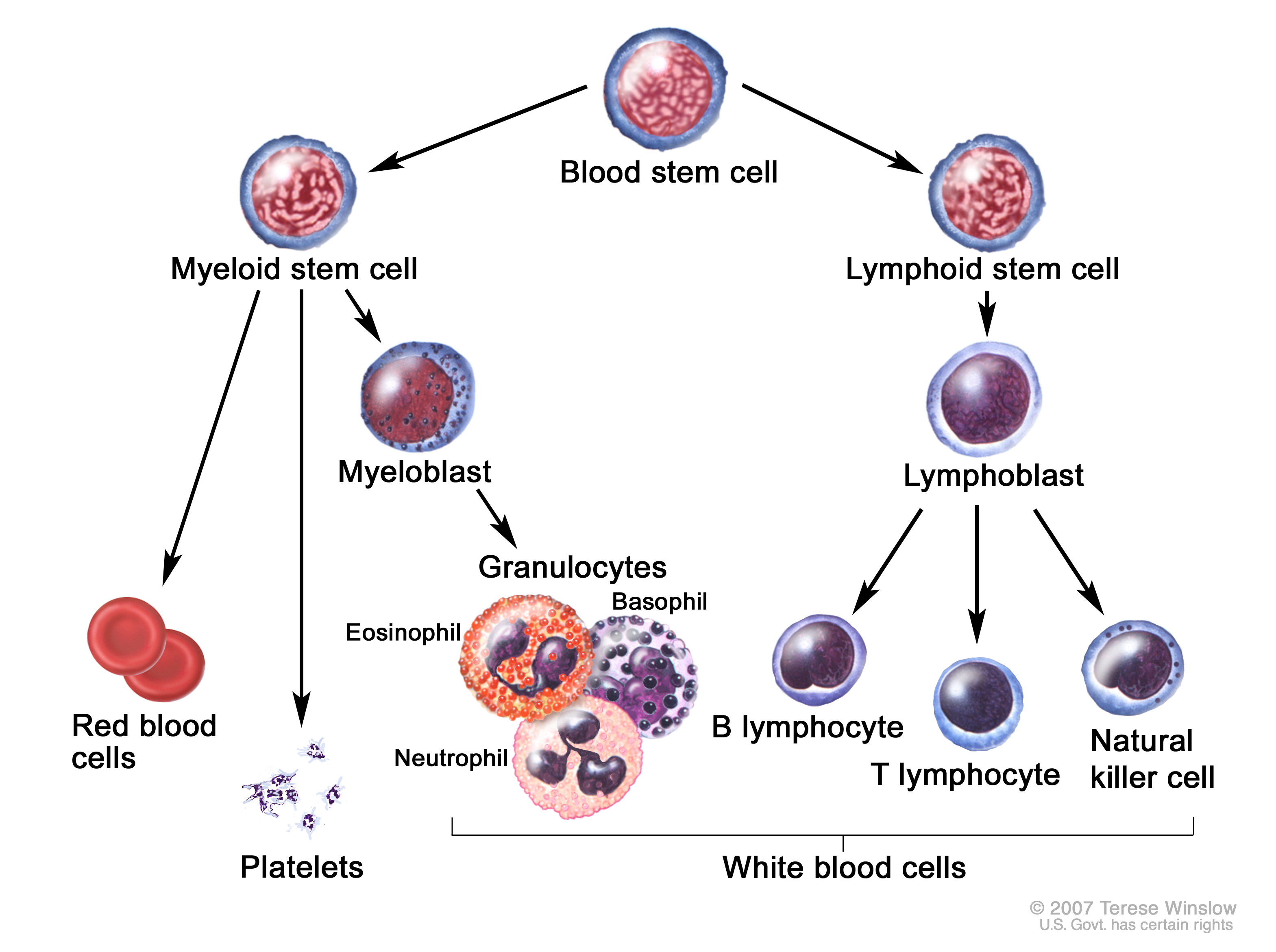
By considering these factors, you and your healthcare provider can better interpret your WBC results and determine if further investigation or intervention is necessary.
Advanced Diagnostic Tools for WBC Evaluation
When basic blood tests reveal persistently low WBC counts, healthcare providers may employ more advanced diagnostic tools to identify the underlying cause. These may include:
Bone Marrow Biopsy
This procedure involves taking a small sample of bone marrow to examine the cells responsible for blood cell production. It can help diagnose conditions affecting WBC formation at the source.
Flow Cytometry
This technique allows for detailed analysis of different types of white blood cells, helping to identify specific deficiencies or abnormalities in cell populations.
Genetic Testing
In some cases, genetic analysis may be performed to identify inherited disorders that affect white blood cell production or function.
Imaging Studies
CT scans or MRIs may be used to examine the spleen, lymph nodes, and other organs involved in immune function and white blood cell production.
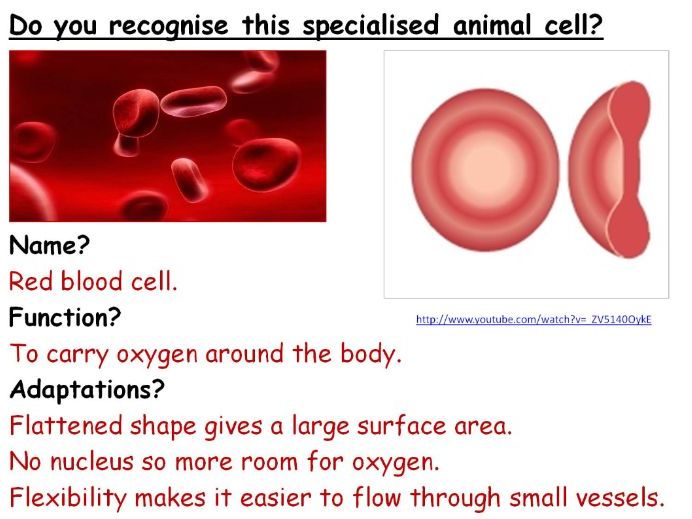
These advanced diagnostic tools provide a more comprehensive view of immune system health and can guide treatment decisions for individuals with chronic low WBC counts.
Emerging Research on White Blood Cell Function
The field of immunology is continually evolving, with new discoveries shedding light on the complex functions of white blood cells. Recent research has revealed intriguing insights that may impact our understanding of WBC counts and their significance:
Trained Immunity
Scientists have discovered that certain white blood cells, particularly monocytes and natural killer cells, can develop a form of “memory” that allows them to respond more effectively to subsequent infections. This concept, known as trained immunity, suggests that past exposures to pathogens or vaccines may influence WBC function beyond traditional adaptive immunity.
Circadian Rhythms and Immune Function
Research has shown that white blood cell counts and activity fluctuate throughout the day in response to our circadian rhythms. This finding highlights the importance of considering the timing of blood tests when interpreting results and underscores the connection between sleep patterns and immune health.
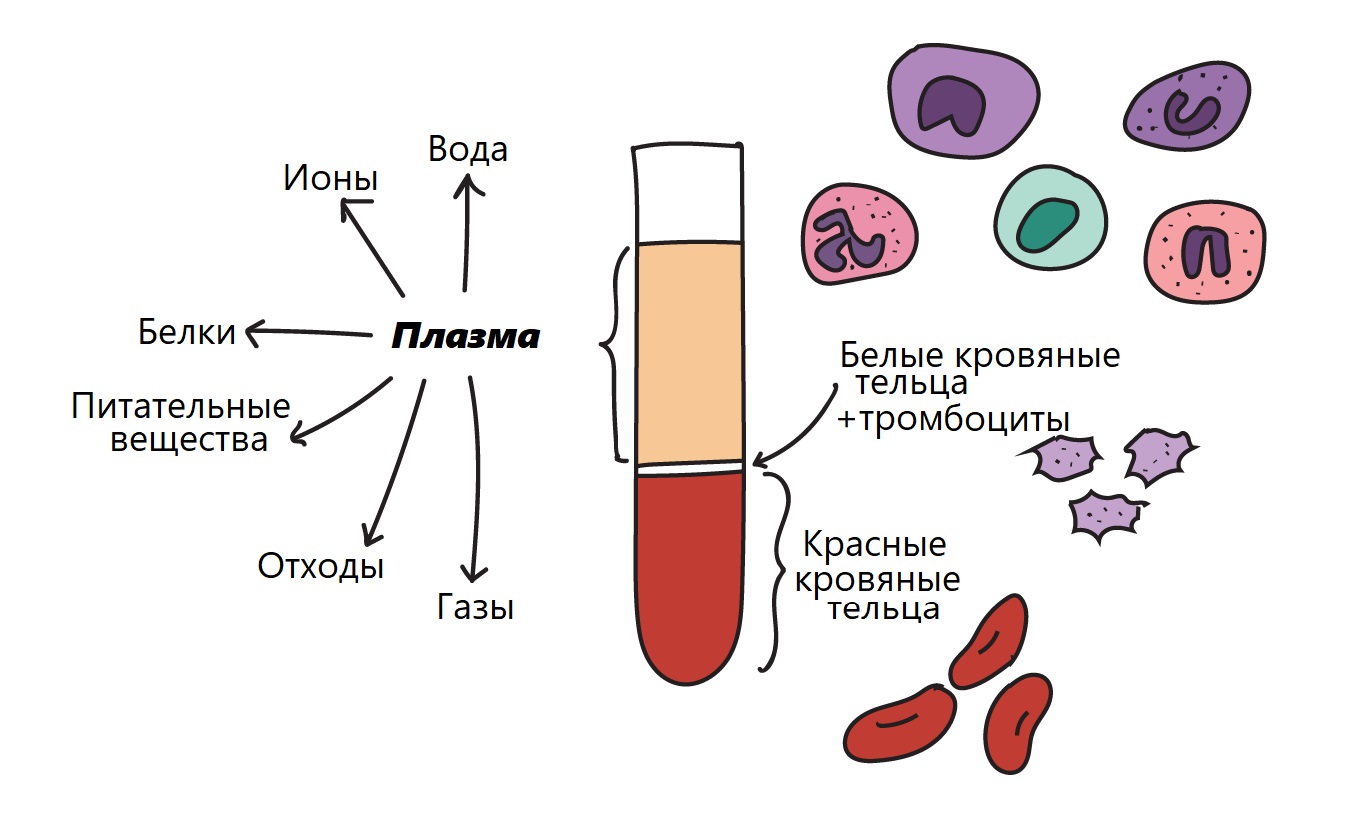
Microbiome Interactions
The relationship between gut microbiota and white blood cell function is an area of intense study. Emerging evidence suggests that the diversity and composition of our gut bacteria can influence WBC production and activity, potentially offering new avenues for supporting immune health through diet and probiotics.
Precision Medicine Approaches
Advances in genetic analysis and biomarker identification are paving the way for more personalized approaches to interpreting WBC counts. In the future, we may be able to define “normal” ranges based on an individual’s unique genetic and environmental factors, rather than relying solely on population-wide averages.
These developments in WBC research underscore the complexity of the immune system and may lead to more nuanced approaches to diagnosing and treating conditions associated with low white blood cell counts.
What Does a Low White Blood Cell Count Mean? The Answer Isn’t Simple
While blood cells are the driving force behind a healthy immune system. But a low white blood cell count doesn’t necessarily mean there’s anything to worry about. In fact, white blood cell measurements from blood tests are best considered in context of your historic data and whether recent tests deviate from your normal. Here’s a comprehensive overview of white blood cells, the reasons they might be low, and how to support their production.
Get 10 recipes to support your immune system.
White blood cells, or leukocytes, are the body’s primary defense against infection. They are largely produced in the bone marrow, although the spleen plays a role in the production of some types of white blood cells, too. The production of these cells is stimulated in response to infection, upon which they circulate throughout the blood and lymph systems.
Your total white blood cell count is the sum of five different types of white blood cells, all with different roles in battling foreign invaders in the body: neutrophils, eosinophils, basophils, lymphocytes, and monocytes.
Neutrophils make up the largest share of your white blood cell count, contributing 60-70% of the total. It’s for this reason that a low white blood cell count is most likely due to a low neutrophil count, also called neutropenia. Neutrophils are the immune system’s first responders—within minutes of an injury, trauma, or inflammation to tissue in the body, neutrophils are drawn to the scene. They essentially control traffic to and from an infection site by recruiting additional white blood cells specialized to the type of invader. Neutrophils function by engulfing the pathogen and breaking it down. And even though they are microscopic, you’ve seen probably seen neutrophils, as they are the basis of pus! The lifespan of a neutrophil is very short, ranging from 5 hours to a few days.
Because your white blood cells play a vital role in immune function, low levels can leave you more susceptible to infection, increase the duration of illness, and increase the severity of it. It’s important to note that white blood cell levels can fluctuate daily and even hourly, so it’s important not to jump to conclusions about your levels from a single blood test.
The definition of “normal” depends on the lab that processed your blood results. Generally, though, a normal white blood cell count is 4,000-11,000 per microliter of blood. This is usually reported as 4.0-11.0 thousands/μL. And if you get neutrophil counts measured as well, this corresponds to a count of1500-7800 cells/μL. You may also see this value represented as a percent of your total white blood cell count.
First, before trying to pinpoint the cause behind a low WBC measure, it is important to note that a single data point really can’t provide a comprehensive answer. Ideally, you should be able to compare recent blood results with past ones to identify a pattern or a deviation from your “normal.” The good news is that WBC count is frequently tested as part of a complete blood count (CBC) panel, a routine test you might’ve had at your doctor’s office or if you’ve ever been hospitalized. So track down past blood work and use it as a comparison point for your new results—using multiple data points can help you determine whether you fall into one of the below categories.
The normal zones outlined above are based on the population as a whole. While they are well defined, they do not necessarily cover 100% of the possible values for a healthy, normal WBC. In fact, there is percentage of the population that has a lower “resting state” level of white blood cells. This is likely due to genetic variations and do not necessarily predispose you for an increased risk of infection. 1,2 Individuals of African, Middle Eastern, and particular regions of European descent may have be genetically predisposed to lower “resting” levels.
If you have a history WBC levels just below the 4.0 thousands/μL normal cutoff and you haven’t experienced a high incidence of illness throughout your life, you likely just have a lower “resting state.” It is still important to discuss your findings with your physician to rule out the need for any additional testing.
If you do not have a history of low WBC but have experienced a pattern of low results over recent months, you may be experiencing an issue with the production of white blood cells.[3] Of course, it is important to have historical data of your WBC to determine the pattern is new—levels right below the 4.0 thousands/μL cutoff likely aren’t clinically significant, but consistent values less than 3.5 thousands/μL—and definitely below 3.0 thousands/μL—should be discussed with your health care provider to determine the cause and assess follow-up testing. Causes range from relatively benign to more serious. Here a few:
Some vitamins and minerals like vitamin B12 and folate play a crucial role in WBC formation. Low levels of vitamin B6, copper, and zinc may also play a role in low WBC production. A blood test can identify whether these nutrients are low, as you should not take supplements of these nutrients if your levels are normal. Chronic malnutrition and alcoholism can also result in these deficiencies, and can therefore also be a cause of low WBC.
Viral infections that last for several months (or indefinitely) can cause white blood cell levels to be chronically low. These include hepatitis B & C, HIV, and tuberculosis, among others. But you likely won’t identify such an infection from a single blood test, so it is important not to jump to conclusions from a single WBC measurement.
Low white blood cell counts can results from some autoimmune conditions (like rheumatoid arthritis), as autoimmune diseases attack the immune system.
Cancers that impact the bone marrow can cause low WBC counts, as most most white blood cells are produced in the bone marrow. WBC counts would be extremely low in these situations, not just mildly below the normal range.
WBC counts would be extremely low in these situations, not just mildly below the normal range.
Some people develop low white blood cell counts due to medical treatments or medications, most prominently chemotherapy.
Individuals with chronically low white blood cell counts should be particularly cautious about infections. Hand washing is a critical step in preventing pathogens on the hands from entering the body through eating or contact with the face. Wearing a facemask is also a good idea to prevent inhalation of pathogens. Cuts and wounds should also be avoided as much as possible, and when a cut or wound is present, great care should be taken to keep the wound clean. Depending on the severity of low WBC, special consideration should also be given to the source and preparation of foods.
A short-term low white blood cell count is usually due to acute neutropenia, a short period of time in which absolute number of neutrophils in the blood are low.[3] Acute neutropenia is usually due to high neutrophil use in the body or low neutrophil production, which are common when your body is fighting off an infection. It’s a relatively common occurrence and is tolerated well in the body.
When an immune response is mounted, neutrophils leave the circulation to defend the body at the location of the damage. Since white blood cells engulf invading pathogens to destroy them, they tend to have a very short lifespan—most neutrophils can only effectively remove a few pathogens before they themselves die. This high usage of neutrophils results in a low level of them in the blood. And since neutrophils are the most common type of white blood cell, lower neutrophil levels bring down your overall WBC count.
So don’t be too stressed about a one-time low WBC measurement. If you are not feeling ill by the time you get your blood test results (they usually take several days to be processed), it is likely that your WBC count and neutrophil levels have retuned to normal since your blood draw.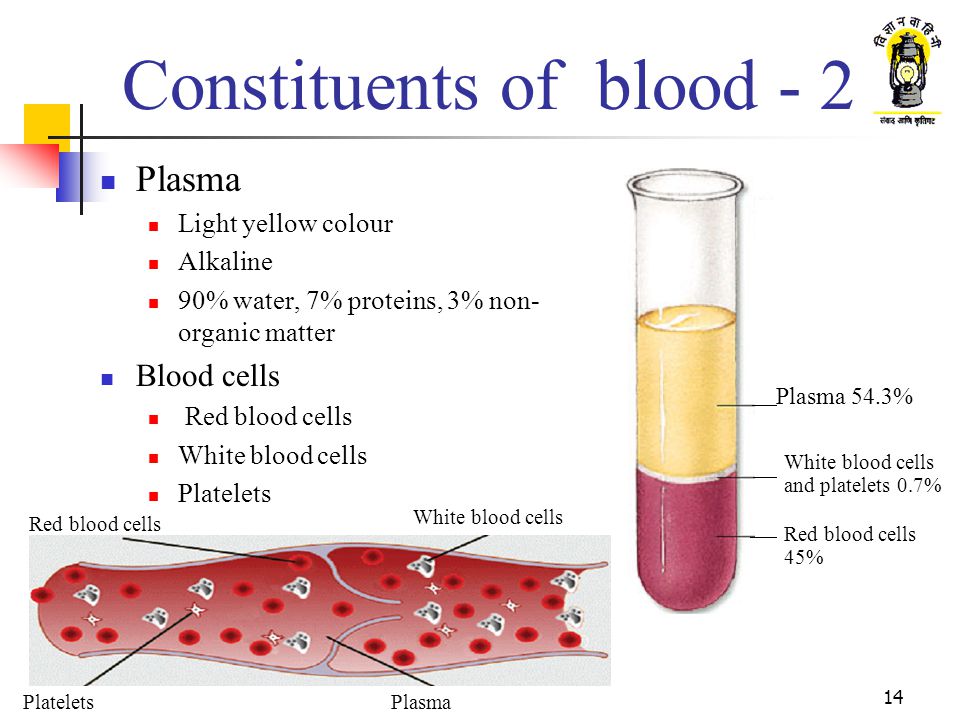 A single low WBC result means that your immune system is working as it should, especially if you never felt sick.
A single low WBC result means that your immune system is working as it should, especially if you never felt sick.
Yes, high frequency of intense exercise, particularly in endurance sports, can reduce your white blood cell count and make you more susceptible to illness. This is often exhibited as upper respiratory infection in runners and cyclists during cold months.[4,5] Adequate rest days between high intensity workouts may help to reduce the incidence of upper respiratory infections.
Low white bloods cells likely aren’t the cause of fatigue. If you have low WBC and are increasingly feeling fatigued, both are likely symptoms of an underlying issue. This could be a range of issues, from over-exercise or overtraining, low folate or B12 levels, autoimmune diseases, viral infections, and certainly cancers.
If your “resting state” white blood cell count is low, it’s unlikely that lifestyle changes will have an impact on your levels. For other causes of unoptimized white blood cell levels, there are some things you can do to help to reduce the demand on your immune system and increase its ability to protect you from foreign pathogens:
Mental, emotional, and physical stressors all contribute to your body’s ability to defend itself from infection. The term allostatic load refers to the wear and tear on the body and brain as a result of stress. It is regulated by adrenalin and cortisol, among other compounds. As your body works to adapt to and deal with the biological causes of stress, its ability to manage resources for the immune defense response may be compromised.[6]
The impact of inadequate sleep on white blood cells is well documented. Sleeping 6-8 hours per night can help you maintain normal levels of white blood cells, especially neutrophils.[7]
The impact of exercise on white blood cell count and immune function is a U-shaped curve. That is, too little exercise and too much exercise can both increase your risk of infection.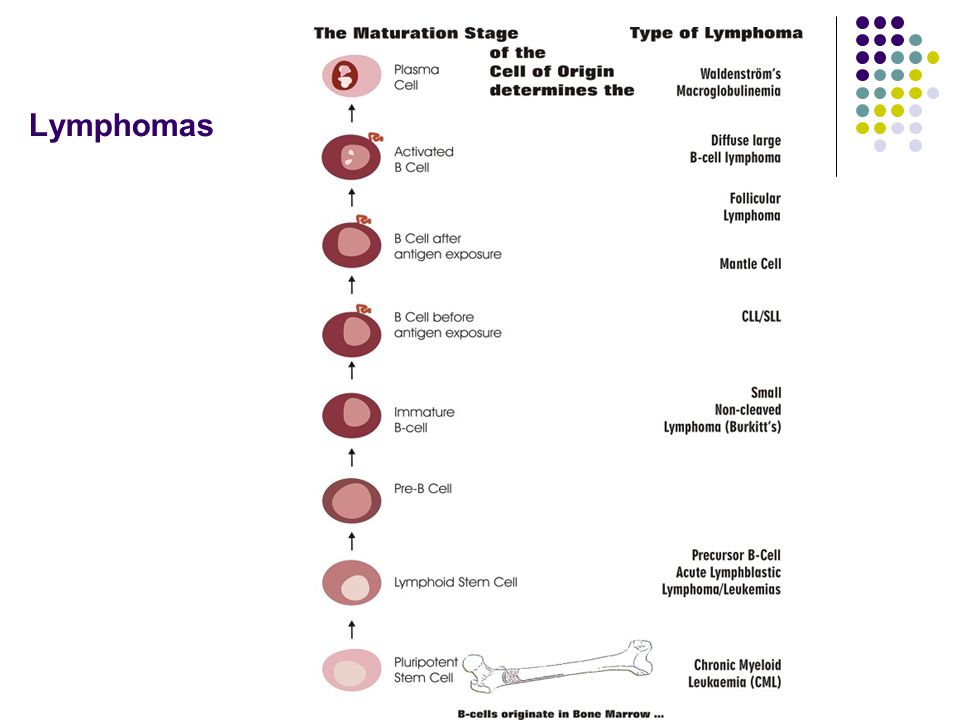 Routine, moderate-intensity exercise (e.g. 30 minutes of moderate intensity activity 5 days per week) has been demonstrated to support optimal white blood cell levels.[8,9] If you engage in high intensity training regularly without a rest day between activities, reducing the frequency of high intensity exercise can also be helpful in restoring your normal WBC level.
Routine, moderate-intensity exercise (e.g. 30 minutes of moderate intensity activity 5 days per week) has been demonstrated to support optimal white blood cell levels.[8,9] If you engage in high intensity training regularly without a rest day between activities, reducing the frequency of high intensity exercise can also be helpful in restoring your normal WBC level.
Fruits and vegetables contain vitamins, minerals, antioxidants, and phytochemicals. These compounds can help to support the normal functioning of white blood cells and the immune system overall. In particular, focus on the antioxidants vitamin A, C, E and selenium. Vitamin A can be found in red, orange, and yellow-hued fruits and vegetables, as well as dark leafy greens. It is best absorbed when eaten with some source of fat and a mixture of fresh and cooked sources. Vitamin C is found in citrus, berries, broccoli, bell peppers, kiwis, and Brussels sprouts. Limited cooking is best to preserve vitamin C content. Vitamin E is mostly found in nuts and seeds. Wheat germ, wheat germ oil, sunflower seeds, and sunflower seed butter at the best sources. Selenium is found in the highest concentration in Brazil nuts. Two Brazil nuts per day provide the daily recommended amount.[10,11]
Excess body weight is associated with elevated levels of white blood cells, as it can cause an increase in inflammation and result in a WBC imbalance.[12]
Smoking causes your white blood cell count to be elevated, as it causes your body to be in a constant state of inflammation and damage caused by tobacco.[13]
Utilizing a history of blood data is the best way to understand a low white blood cell count. A single low WBC measure is not enough information for diagnosis. Speak with your physician about the need for follow-up testing. For most people, a low white blood cell level does not indicate illness or disease, but rather that your immune system is functioning properly. To maintain a properly functioning immune system, take action on improving lifestyle factors related to your white blood cell count. To learn what actions you can take to impact your white blood cell count, upload your results and develop your action plan with InsideTracker.
To learn what actions you can take to impact your white blood cell count, upload your results and develop your action plan with InsideTracker.
Ashley Reaver, MS, RD, CSSD
Ashley is the Lead Nutrition Scientist at InsideTracker. As a registered dietitian and educator, Ashley enjoys cooking and teaching individuals the power that food has on their health. You’ll find Ashley hiking, eating, and spending time with her family. Follow her on Instagram @lower.cholesterol.nutrition.
References
[1] Crosslin DR, McDavid A, Weston N, et al. Genetic variants associated with the white blood cell count in 13,923 subjects in the eMERGE Network. Hum Genet. 2012;131(4):639‐652. doi:10.1007/s00439-011-1103-9
[2] Reich D, Nalls MA, Kao WH, et al. Reduced neutrophil count in people of African descent is due to a regulatory variant in the Duffy antigen receptor for chemokines gene. PLoS Genet. 2009;5(1):e1000360. doi:10.1371/journal.pgen.1000360
[3] Boxer, Laurence A. “How to approach neutropenia.” Hematology. American Society of Hematology. Education Program vol. 2012 (2012): 174-82. doi:10.1182/asheducation-2012.1.174
[4] R. Horn, P L et al. “Lower white blood cell counts in elite athletes training for highly aerobic sports.” European journal of applied physiology vol. 110,5 (2010): 925-32. doi:10.1007/s00421-010-1573-9
[5] S. König D, Grathwohl D, Weinstock C, Northoff H, Berg A. Upper respiratory tract infection in athletes: influence of lifestyle, type of sport, training effort, and immunostimulant intake. Exercise Immunology Review. 2000 ;6:102-120.
[6] McEwen, Bruce S. “Stressed or stressed out: what is the difference?.” Journal of psychiatry & neuroscience : JPN vol. 30,5 (2005): 315-8.
[7] Faraut B, Boudjeltia KZ, Vanhamme L, Kerkhofs M. Immune, inflammatory and cardiovascular consequences of sleep restriction and recovery. Sleep Med Rev.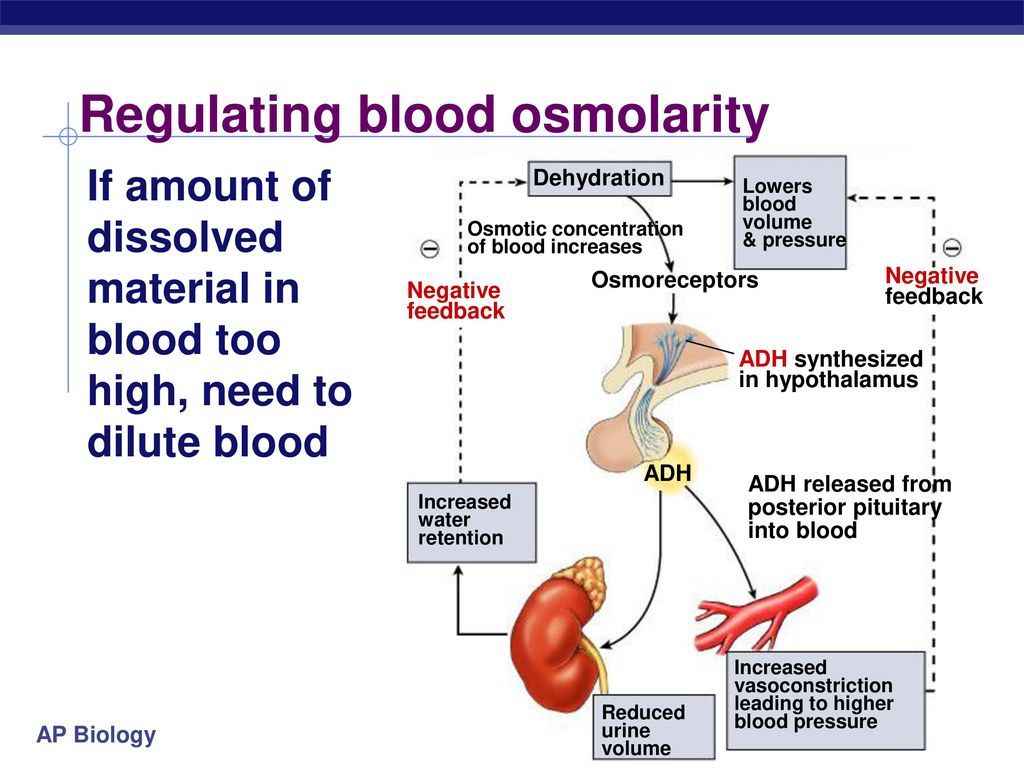 2012;16(2):137‐149. doi:10.1016/j.smrv.2011.05.00
2012;16(2):137‐149. doi:10.1016/j.smrv.2011.05.00
[8] Johannsen, Neil M et al. “Effect of different doses of aerobic exercise on total white blood cell (WBC) and WBC subfraction number in postmenopausal women: results from DREW.” PloS one vol. 7,2 (2012): e31319. doi:10.1371/journal.pone.0031319
[9] Willis EA, Shearer JJ, Matthews CE, Hofmann JN. Association of physical activity and sedentary time with blood cell counts: National Health and Nutrition Survey 2003-2006. PLoS One. 2018;13(9):e0204277. Published 2018 Sep 25. doi:10.1371/journal.pone.0204277
[10] Gravina, Leyre et al. “Influence of nutrient intake on antioxidant capacity, muscle damage and white blood cell count in female soccer players.” Journal of the International Society of Sports Nutrition vol. 9,1 32. 19 Jul. 2012, doi:10.1186/1550-2783-9-32
[11] Colacino, Justin A., et al. “Dietary antioxidant and anti-inflammatory intake modifies the effect of cadmium exposure on markers of systemic inflammation and oxidative stress.” Environmental research 131 (2014): 6-12.
[12] Vuong J, Qiu Y, La M, Clarke G, Swinkels DW, Cembrowski G. Reference intervals of complete blood count constituents are highly correlated to waist circumference: should obese patients have their own “normal values?”. Am J Hematol. 2014;89(7):671‐677. doi:10.1002/ajh.23713
[13] Higuchi T, Omata F, Tsuchihashi K, Higashioka K, Koyamada R, Okada S. Current cigarette smoking is a reversible cause of elevated white blood cell count: Cross-sectional and longitudinal studies. Prev Med Rep. 2016;4:417‐422. Published 2016 Aug 9. doi:10.1016/j.pmedr.2016.08.009
Does a high WBC count always signal infection? : Nursing2021
What’s your profession?Academic MedicineAcute Care NursingAddiction MedicineAdministrationAdvanced Practice NursingAllergy & ImmunologyAllied HealthAlternative & Complementary MedicineAnesthesiologyAnesthesiology NursingAudiology & Ear and HearingBasic ScienceCardiologyCardiothoracic SurgeryCardiovascular NursingCardiovascular SurgeryChild NeurologyChild PsychiatryChiropracticsClinical SciencesColorectal SurgeryCommunity HealthCritical CareCritical Care NursingDentistryDermatologyEmergency MedicineEmergency NursingEndocrinologyEndoncrinologyForensic MedicineGastroenterologyGeneral SurgeryGeneticsGeriatricsGynecologic OncologyHand SurgeryHead & Neck SurgeryHematology/OncologyHospice & Palliative CareHospital MedicineInfectious DiseaseInfusion NursingInternal/General MedicineInternal/General Medicine ResidencyLibrary SciencesMaternal Child NursingMedical OncologyMedical ResearchNeonatal/PerinatalNeonatal/Perinatal NursingNephrologyNeurologyNeurosurgeryNursing-administrativeNursing-all SpecialtiesNursing-educationNutrition & DieteticsObstetrics & GynecologyObstetrics & Gynecology NursingOccupational & Environmental MedicineOncology NursingOncology SurgeryOphthalmology/OptometryOral & Maxillofacial SurgeryOrthopedic NursingOrthopedics/Spine/Sports Medicine SurgeryOtolaryngologyPain MedicinePathologyPediatric SurgeryPediatricsPharmacologyPharmacyPhysical Medicine & RehabilitationPhysical Therapy & Womens Health Physical TherapyPlastic SurgeryPodiatary-generalPodiatry-generalPrimary Care/Family Medicine/General PracticePsychiatric NursingPsychiatryPsychologyPublic HealthPulmonologyRadiation Oncology/TherapyRadiologyRheumatologySkills & ProceduresSleep MedicineSport & Exercise/Training/FitnessSports MedicineSurgical NursingTransitional CareTransplant SurgeryTrauma NursingTrauma SurgeryUrologyWomens HealthWound CareOther
What’s your speciality?Addiction MedicineAllergy & Clinical ImmunologyAnesthesiologyAudiology & Speech-Language PathologyCardiologyCardiothoracic SurgeryCritical Care MedicineDentistry, Oral Surgery & MedicineDermatologyDermatologic SurgeryEmergency MedicineEndocrinology & MetabolismFamily or General PracticeGastroenterology & HepatologyGenetic MedicineGeriatrics & GerontologyHematologyHospitalistImmunologyInfectious DiseasesInternal MedicineLegal/Forensic MedicineNephrologyNeurologyNeurosurgeryNursingNutrition & DieteticsObstetrics & GynecologyOncologyOphthalmologyOrthopedicsOtorhinolaryngologyPain ManagementPathologyPediatricsPlastic/ Reconstructive SugeryPharmacology & PharmacyPhysiologyPsychiatryPsychologyPublic, Environmental & Occupational HealthRadiology, Nuclear Medicine & Medical ImagingPhysical Medicine and RehabilitationRespiratory/Pulmonary MedicineRheumatologySport Medicine/ScienceSurgery (General)Trauma SurgeryToxicologyTransplantation SurgeryUrologyVascular SurgeryVirologyI don’t have a medical specialty
What’s your work setting?Hospital Under 250 BedsHospital Over 250 BedsEldercare or Hospice FacilityPsychiatric or Rehabilitative FacilityPrivate PracticeGroup PracticeCorporation (Pharmaceutical, Biotechnology, Engineering, etc. )Doctoral University or Medical SchoolMasters or 4-Year Academic UniversityCommunity CollegeGovernmentOther
)Doctoral University or Medical SchoolMasters or 4-Year Academic UniversityCommunity CollegeGovernmentOther
White blood cell count – Complete Blood Count
White blood cell count – Complete Blood Count
White Blood Cell Count (WBC)
and Differential
White blood cells, or leukocytes,
are classified into two main groups: granulocytes and
nongranulocytes (also known as agranulocytes).
- The granulocytes, which
include neutrophils, eosinophils, and basophils,
have granules in their cell cytoplasm. Neutrophils,
eosinophils, and basophils also have a multilobed nucleus. As a result they are also
called polymorphonuclear leukocytes or “polys.”
The nuclei of neutrophils also appear to be segmented, so
they may also be called segmented neutrophils or
“segs.” - The nongranuloctye white
blood cells, lymphocytes and monocytes,
do not have granules and have nonlobular nuclei. They are
sometimes referred to as mononuclear leukocytes.
The lifespan of white blood cells ranges from
13 to 20 days, after which time they are destroyed in the
lymphatic system. When immature WBCs are first released from the
bone marrow into the peripheral blood, they are called
“bands” or “stabs.” Leukocytes fight
infection through a process known as phagocytosis. During
phagocytosis, the leukocytes surround and destroy foreign
organisms.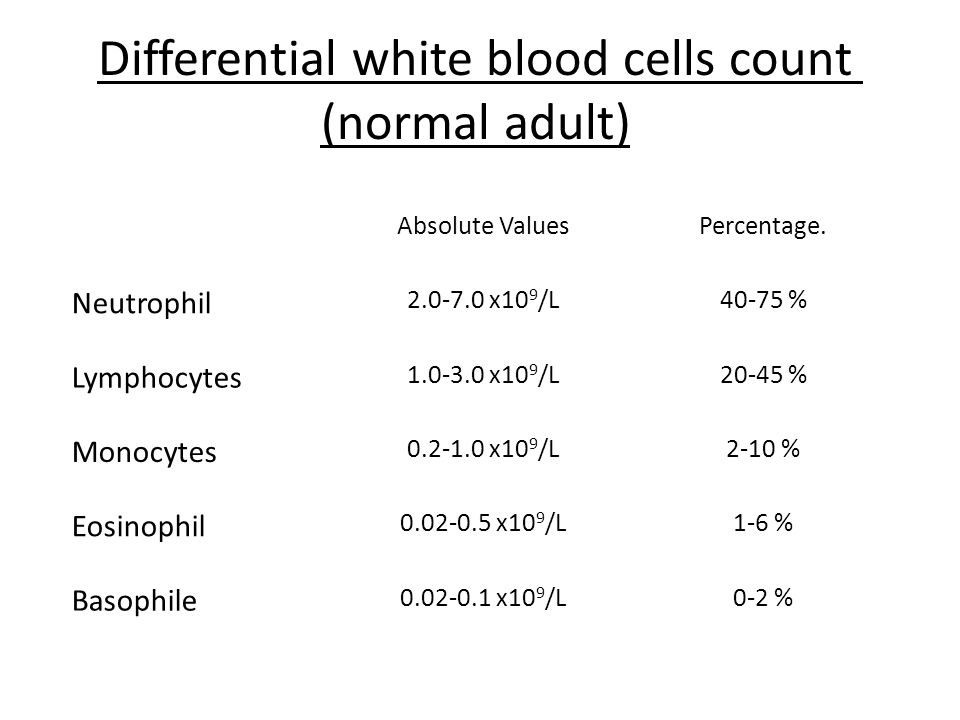 White blood cells also produce, transport, and
White blood cells also produce, transport, and
distribute antibodies as part of the body’s immune response.
Two measurements of white blood cells are
commonly done in a CBC:
- the total number of white blood cells in a
microliter (1×10-6
liters) of blood, reported as an absolute number of “X” thousands
of white blood cells, and - the percentage of each of the five types
of white blood cells. This test is known as a differential or “diff” and is reported in percentages.
Normal values for total WBC and
differential in adult males and females are:
- Total WBC: 4,500 – 10,000
- Bands or stabs: 3 – 5 %
- Granulocytes (or
polymorphonuclears)- Neutrophils (or segs): 50 –
70% relative value (2500-7000 absolute value) - Eosinophils: 1 – 3% relative value (100-300
absolute value) - Basophils: 0.4% – 1% relative value (40-100
absolute value)
- Neutrophils (or segs): 50 –
- Agranulocytes (or
mononuclears)- Lymphocytes: 25 – 35% relative value (1700-3500
absolute value) - Moncytes: 4 – 6% relative value (200-600
absolute value)
- Lymphocytes: 25 – 35% relative value (1700-3500
Each differential always adds
up to 100%. To make an accurate assessment, consider both
relative and absolute values. For example a relative value of 70%
neutrophils may seem within normal limits; however, if the total
WBC is 20,000, the absolute value (70% x 20,000) would be an
abnormally high count of 14,000.
Instant Feedback:
It
is important to consider both the relative and absolute values of various types
of white blood cells when interpreting a WBC differential.
The numbers of leukocytes changes with age and
during pregnancy.
- On the day of birth, a newborn has a high white blood cell
count, ranging from 9,000 to 30,000 leukocytes. This number falls to adult
levels within two weeks. - The percentage of neutrophils is high for
the first few weeks after birth, but then lymphocyte
predominance is seen. - Until about 8 years of age, lymphocytes
are more predominant than neutrophils. - In the elderly, the total WBC decreases
slightly. - Pregnancy results in a leukocytosis,
primarily due to an increase in neutrophils with a slight
increase in lymphocytes.
Leukocytosis, a WBC above 10,000, is usually
due to an increase in one of the five types of white blood cells
and is given the name of the cell that shows the primary
increase.
- Neutrophilic leukocytosis = neutrophilia
- Lymphocytic leukocytosis = lymphocytosis
- Eosinophilic leukocytosis = eosinophilia
- Monocytic leukocytosis = monocytosis
- Basophilic leukocytosis = basophilia
In response to an acute infection, trauma, or
inflammation, white blood cells release a substance called
colony-stimulating factor (CSF). CSF stimulates the bone marrow
to increase white blood cell production. In a person with
normally functioning bone marrow, the numbers of white blood
cells can double within hours if needed. An increase in the
An increase in the
number of circulating leukocytes is rarely due to an increase in
all five types of leukocytes. When this occurs, it is most often
due to dehydration and hemoconcentration. In some diseases, such
as measles, pertussis and sepsis, the increase in white blood
cells is so dramatic that the picture resembles leukemia.
Leukemoid reaction, leukocytosis of a temporary nature, must be
differentiated from leukemia, where the leukocytosis is both
permanent and progressive.
Therapy with steroids modifies the leukocytosis response. When
corticosteroids are given to healthy persons, the WBC count
rises. However, when corticosteroids are given to a person with a severe infection,
the infection can spread significantly without producing an expected WBC rise.
An important concept to remember is that, leukocytosis
as a sign of infection can be masked in a patient taking corticosteroids.
Instant Feedback:
Corticosteroids
can mask infection by suppressing the inflammatory response and the release
of WBCs.
Leukopenia occurs when the WBC
falls below 4,000. Viral infections, overwhelming bacterial
infections, and bone marrow disorders can all cause leukopenia.
Patients with severe leukopenia should be protected from anything
that interrupts skin integrity, placing them at risk for an
infection that they do not have enough white blood cells to
fight. For example, leukopenic patients should not have
intramuscular injections, rectal temperatures or enemas.
Drugs that may produce leukopenia include:
- Antimetabolites
- Barbiturates
- Antibiotics
- Anticonvulsants
- Antithyroid drugs
- Arsenicals
- Antineoplastics
- Cardiovascular drugs
- Diuretics
- Analgesics and anti-inflammatory drugs
- Heavy metal intoxication
Leukocytes: critical low and high
values
- A WBC of less than 500
places the patient at risk for a fatal infection.
- A WBC over 30,000
indicates massive infection or a serious disease such as
leukemia.
When a patient is receiving chemotherapy that
suppresses bone marrow production of leukocytes, the point at
which the count is lowest is referred to as the nadir.
© RnCeus.com
A number of conditions can spark low white blood cell count
DEAR MAYO CLINIC: My 16-year-old granddaughter was recently diagnosed with a low white blood cell count after going to the ER twice with a migraine headache, vomiting and temporary loss of sight. What could cause a low white blood cell count in someone her age? I’m worried it’s something serious and am wondering what other tests should be done.
ANSWER: Many diseases and conditions can lead to a low white blood cell count. It is difficult to say what the specific cause might be in your granddaughter’s situation without more information. It’s unlikely that the low count is related to her migraine and other symptoms. It would be wise to do another blood test to see if the problem persists. Her doctor can then decide if she needs to be evaluated further.
Blood has a number of components. In addition to white blood cells, which fight infection, red blood cells carry oxygen and platelets help blood clot. Bone marrow, the spongy tissue inside bones, makes the blood cells.
There are several kinds of white blood cells. Neutrophils fight fungal and bacterial infections. Lymphocytes protect the body from viral infections. Monocytes help get rid of dead or damaged tissue and regulate the body’s immune response. Eosinophils are disease-fighting white blood cells. Basophils play a role in wound healing, infection and allergic reactions.
One of the most common causes of a low white blood cell count is a viral infection. These infections can sometimes temporarily disrupt the bone marrow’s production of blood cells, so blood cell counts drop. The counts typically rebound as the body recovers from the infection. For most people, there is no long-term effect from this temporary drop in blood cells.
These infections can sometimes temporarily disrupt the bone marrow’s production of blood cells, so blood cell counts drop. The counts typically rebound as the body recovers from the infection. For most people, there is no long-term effect from this temporary drop in blood cells.
Certain medications may also lead to a low white blood cell count because they can destroy white blood cells or damage the bone marrow. For example, taking antibiotics may sometimes cause an abnormal drop in neutrophils, a condition known as neutropenia. With that in mind, it would be useful to have your granddaughter’s doctor review any medications she’s taking to see if they could be causing changes in her blood cell counts.
A variety of other conditions and disorders may lead to neutropenia, too. For an overview of this condition and more details about how it is diagnosed and treated, you can view a Mayo Clinic video about it at https://www.youtube.com/watch?v=elHkfcANHs.
The list of other possible causes for a drop in a person’s white blood cell count is long. Autoimmune disorders, congenital disorders that affect the way bone marrow works, disorders of the spleen, certain infectious diseases, cancer and parasitic diseases, among others, can all lead to low white blood cell counts.
A good next step for your granddaughter would be to have a complete blood count test done. This test measures the components in blood. The specific type of white blood cells that this test shows to be low in your granddaughter, as well as the results of the other blood component measurements, may help shed light on what could be causing the decrease.
The other symptoms you mention — headache, loss of vision and vomiting — should also be addressed with a physical exam, a review of your granddaughter’s family and medical history, and any additional tests her doctor recommends. Even if these symptoms are not related to the decrease in her white blood cell count, it’s important to investigate and identify their underlying cause. — Carola Arndt, M.D., Pediatric Hematology/Oncology, Mayo Clinic, Rochester, Minn.
— Carola Arndt, M.D., Pediatric Hematology/Oncology, Mayo Clinic, Rochester, Minn.
(Mayo Clinic Q & A is an educational resource and doesn’t replace regular medical care. E-mail a question to MayoClinicQ&[email protected]. For more information, visit http://www.mayoclinic.org.)
(c) 2014 MAYO FOUNDATION FOR MEDICAL EDUCATION AND RESEARCH. DISTRIBUTED BY TRIBUNE CONTENT AGENCY, LLC. ALL RIGHTS RESERVED.
Low White Blood Cell Count
Leer esta página en español
White blood cells are produced by your bone marrow to help your body fight infection. If you have fewer than normal white blood cells, you have a higher risk of getting an infection. When you have a low white blood cell count, your immune system isn’t working as well as it should. Doctors call this “immunocompromised.” If you’re immunocompromised, you have a higher risk of getting sick from a bacterium or virus that doesn’t affect people with a healthy immune system.
Breast cancer treatments that can lower your white blood cell count:
- chemotherapy:
- radiation therapy
- some targeted therapies:
-
immunotherapy:
If you get an infection because you have a low white blood cell count, your symptoms may include:
- fever (call your doctor immediately if your fever is higher than 101.5 degrees F)
- chills
- sore throat or cough
- shortness of breath
- diarrhea
- nasal congestion
- vaginal discharge, itching, or burning during urination
- an injury site becomes red, swollen, or warm
Boosting your white blood cell count
If you have a low white blood cell count, your doctor can prescribe medicines to help stimulate your immune system after each round of chemotherapy. Your doctor also may decide to stop your chemotherapy treatment for a little while so your body can recover and make more white blood cells.
Your doctor also may decide to stop your chemotherapy treatment for a little while so your body can recover and make more white blood cells.
Things to consider if you have a low white blood cell count
If you have a low white blood cell count, consider taking the following steps to avoid infection:
-
Avoid large crowds of people during the cold and flu season. Germs can spread easily through coughing and sneezing. -
Pay attention to notices about food-borne illness outbreaks. If you have a weakened immune system, you have a higher risk of becoming dangerously ill from Listeria, E. coli, and Salmonella bacteria, as well as Shiga toxin. All these bacteria have caused food recalls in the last several years. Avoid any foods that have been recalled. Follow the U.S. Department of Health and Human Services “Clean, Separate, Cook, and Chill” steps when preparing and storing food. Eating a healthy diet can help you get the nutrients you need to fight infection. -
Avoid swimming or wading in lakes, streams, and ponds.
Cryptosporidium is a microscopic parasite that is one of the most common causes of water-borne disease in the United States. It gets into water through the feces of infected animals, such as raccoons, squirrels, and deer. If you’re immunocompromised, you have a higher risk of becoming dangerously ill from Cryptosporidium. -
Prevent mosquito bites. Mosquitoes can carry West Nile virus, an illness that can be very serious for immunocompromised people. When you go outside, use insect repellent that contains DEET, picaridin, oil of lemon eucalyptus, or IR3535, ingredients that are recommended by the U.S. Centers for Disease Control. Avoid going outside at dawn and dusk and wear long sleeves and long pants when you do go out. Also, make sure your window and door screens don’t have any holes in them.
-
Wash your hands frequently and have the people you spend time with do the same. -
Prevent cuts and scrapes. Wear gloves when gardening, take care when clipping finger/toe nails, and use caution when handling knives and scissors. -
Don’t pick at scabs or pimples — they can become infected if the wound is opened. -
Don’t have dental work while your white blood cell count is low; cuts in your mouth might lead to infection.
Learn more on our Eating When You Have a Weakened Immune System page.
Brian Wojciechowski, M.D. explains different types of white blood cells, how breast cancer treatment lowers their levels, and what low white blood cell levels mean for your risk of infection.
Was this article helpful?
Yes /
No
Was this article helpful?
Last modified on December 4, 2020 at 11:30 AM
Leukopenia: Causes, treatment, and outlook
Leukopenia is a condition where a person has a reduced number of white blood cells. This increases their risk of infections.
A person’s blood is made up of many different types of blood cells. White blood cells, also known as leukocytes, help to fight off infection. Leukocytes are a vital part of the immune system.
People who have leukopenia have fewer white blood cells than they should. This makes them more likely to get infections.
This article explores the effect leukopenia has on the body, what causes it, and the treatment options available.
Share on PinterestWhite blood cells help the body to fight infections. A person with leukopenia does not have enough white blood cells.
Leukopenia is a condition where a person has fewer white blood cells in their bloodstream than they should.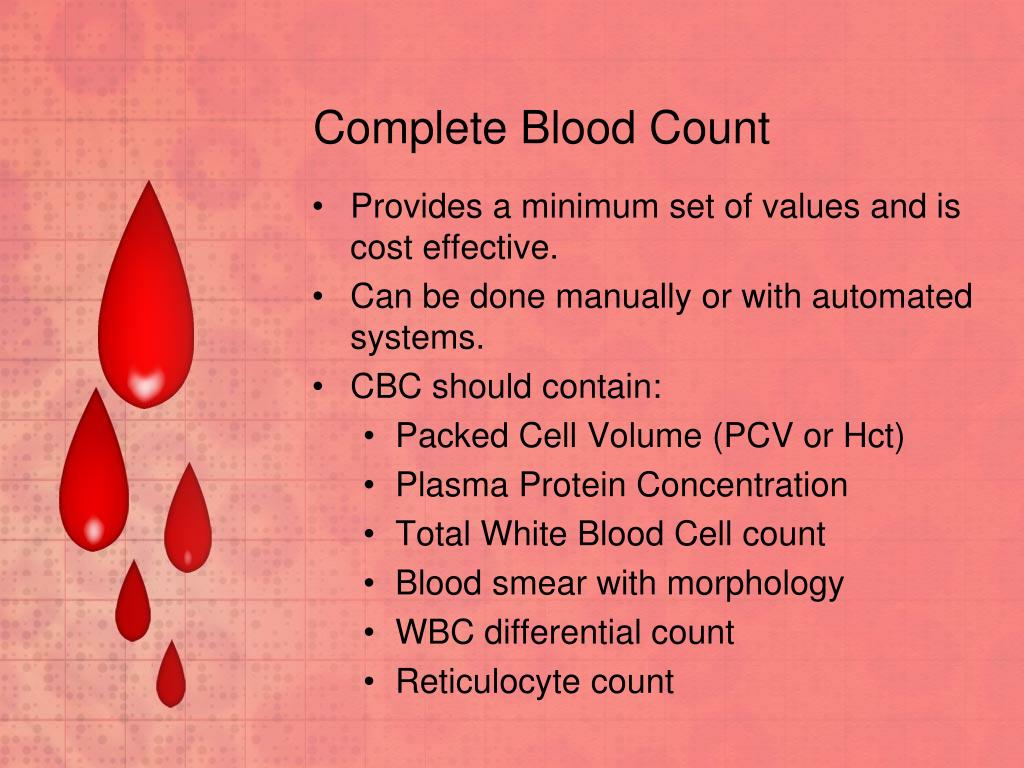 Leukopenia is diagnosed with a blood test called a complete blood count or CBC.
Leukopenia is diagnosed with a blood test called a complete blood count or CBC.
A healthy white blood cell count is between 3,500 and 11,000 white blood cells per microliter. A person with leukopenia may have fewer than 3,500 white blood cells per microliter.
White blood cells are made in the bone marrow and are critical for the immune system. Having too few of them means the body is less able to fight off infections and diseases.
There are five types of white blood cells. Each helps to protect the body from a different kind of infection:
- Neutrophils: These make up 55 to 70 percent of total white blood cells. They help fight off fungal and bacterial infections.
- Lymphocytes: These are the second most common type of white blood cell. They protect the body from viral infections.
- Basophils: These are the least common type of the white blood cells. They are involved in inflammatory reactions to allergens.
- Monocytes: These are the largest of the white blood cells. They play a role in fighting off bacteria, fungi, and viruses. They also help mend tissue that has been damaged by inflammation.
- Eosinophils: These fight parasites and play a role in allergic reactions and conditions, such as asthma.
There are five kinds of leukopenia, each one corresponding to the type of white blood cell that is affected.
The terms leukopenia and neutropenia are often used interchangeably. However, they refer to slightly different conditions.
Leukopenia is an umbrella term that refers to a reduction in any of the white blood cell types.
Neutropenia is a type of leukopenia but refers specifically to a decrease in neutrophils, the most common type of white blood cell.
A person’s neutrophil count is an important indicator of their infection risk.
An absolute neutrophil count (ANC) is a test that doctors may carry out to decide a person’s overall health.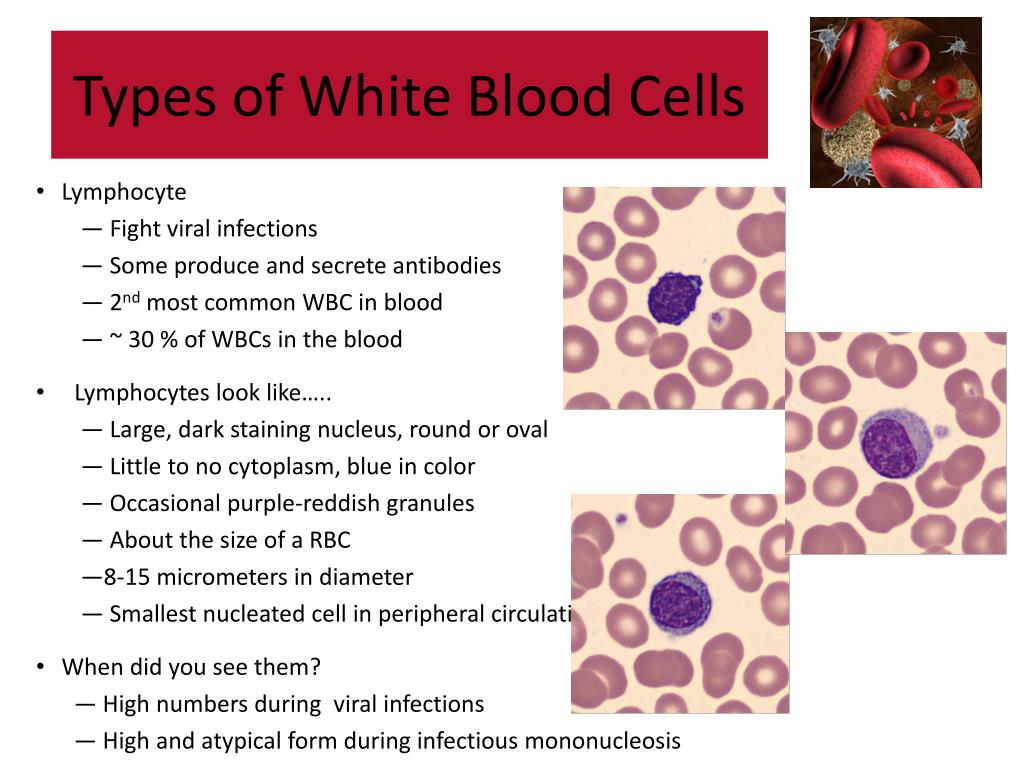 This test can help to diagnose conditions that include leukemia. It can also help assess the body’s response to treatments, including chemotherapy.
This test can help to diagnose conditions that include leukemia. It can also help assess the body’s response to treatments, including chemotherapy.
Share on PinterestA person with leukopenia may be more prone to infections, which may cause symptoms such as fever, sweating, and chills.
There are no specific symptoms of having a low white blood cell count. However, when someone has leukopenia, they are more likely to get infections. The symptoms of infection include:
A person with leukopenia may have other symptoms that relate to the cause of their low white blood cell count. The different causes of leukopenia are explored below.
There are several medical conditions that cause leukopenia by interfering with the production of white blood cells in the bone marrow.
Other conditions cause leukopenia by destroying white blood cells rather than affecting their production. Leukopenia may also be the result of some treatments and medications.
Conditions that may cause leukopenia
The following conditions may cause leukopenia:
- Viral infections: Acute viral infections, such as colds and influenza may lead to temporary leukopenia. In the short term, a viral infection may disrupt the production of white blood cells in a person’s bone marrow.
- Blood cell and bone marrow conditions: These can lead to leukopenia. Examples include aplastic anemia, overactive spleen, and myelodysplastic syndromes.
- Cancer: Leukemia and other cancers may damage the bone marrow and lead to leukopenia.
- Infectious diseases: Examples include HIV, AIDS, and tuberculosis. According to a 2015 study, women with tuberculosis are more likely to develop leukopenia than men.
- Autoimmune disorders: Some of these kill white blood cells. Examples include lupus and rheumatoid arthritis.
- Birth disorders: Also known as congenital disorders, these may lead to leukopenia.
 Examples include Kostmann syndrome and myelokathexis.
Examples include Kostmann syndrome and myelokathexis. - Malnutrition: Certain vitamin and mineral deficiencies may lead to leukopenia. Examples include deficiencies in vitamin B-12, folate, copper, and zinc.
- Sarcoidosis: This is an overreaction of the immune system that leads to small areas of inflammation in the body. It can also affect bone marrow.
Treatments and medications that may cause leukopenia
Cancer treatments may affect a person’s white blood cell count, leading to leukopenia. Examples that may have this effect include:
Certain medications can also affect the number of white blood cells in someone’s blood and may lead to leukopenia. Medications that can have this effect include:
- interferons to treat multiple sclerosis
- lamotrigine and sodium valproate for epilepsy and as mood stabilizers
- bupropion, an antidepressant and smoking cessation medication
- clozapine, an antipsychotic medication
- minocycline, a common antibiotic
- immunosuppressants, such as sirolimus, mycophenolate mofetil, tacrolimus, and cyclosporine
- steroids
- penicillin
If a person is unsure of the generic name of the drug they are taking, and if it will affect their immune system, it is a good idea for them to ask a doctor.
If a person’s body is fighting off infection, this may affect their white blood cell count. They may have slightly fewer white blood cells circulating in their bloodstream. This condition is called pseudoleukopenia.
Pseudoleukopenia is the stage before leukopenia. If a person’s white blood cells continue to decrease, they may go on to develop leukopenia.
If a medication is causing leukopenia, a doctor might recommend that a person stops taking it or tries a different type. A person should never stop or change their medication without first consulting a doctor.
If a person has cancer and their chemotherapy is causing leukopenia, they may need to pause their treatment to allow their white blood cells to replenish.
Treatments that use growth factors, such as granulocyte colony-stimulating factor, may help leukopenia. These are often used when chemotherapy is causing leukopenia or if the cause is genetic.
A 2015 study found that when chemotherapy was used alongside a drug called erlotinib, a tyrosine kinase inhibitor, the risk of leukopenia was much lower.
Management
The following home treatments and behaviors may help a person with leukopenia improve their condition and reduce their risk of infection:
- eating a healthful diet
- getting plenty of rest
- avoiding cuts and scrapes
- practicing good hygiene to avoid germs
Treatment may also be needed for any infections that result from a reduced white blood cell count. This might include antibiotics or antifungals.
Treating leukopenia may involve pausing medication or treatments. This may be problematic if the underlying condition is serious, such as cancer, but doctors will help a person work around the condition.
A doctor will regularly check a person’s white blood cell count if they have a condition known to cause leukopenia.
Getting regular blood tests helps leukopenia to be identified early and treated before it leads to complications.
Complete Blood Count in Primary Care
In this article
View / Download pdf
version of this article
Key points
To provide an overview of the use of the complete blood count in primary care and to provide advice on appropriate follow-up
for abnormal results.
Introduction
The complete blood count (CBC) is the most frequently requested blood test in New Zealand. The primary points of interest
in the CBC are often whether a patient is anaemic, whether the white count shows evidence of infection and whether the
platelets are at a level that may affect haemostasis.
GPs have told us they are reasonably comfortable interpreting CBC results with marked abnormalities, but would like
guidance when the results show only subtle abnormalities or when the clinical picture is not clear.
This is a consensus document
This is not a comprehensive document covering all causes of abnormal results; it is a consensus document produced in
conjunction with specialist haematologists, providing an overview for some scenarios encountered in primary care.
Background
Haematopoiesis – Cell development
All blood cells are produced within the bone marrow from a small population of stem cells. Less than one in 5000 of
the marrow cells is a stem cell. These cells represent a self-renewing population.
The term haematopoiesis refers to the formation and development of the blood cells (Figure 1). In humans the bone marrow
is the major site of haematopoiesis for the life of the individual.
Initial differentiation of haemopoietic stem cells involves one of two pathways, lymphoid or myeloid. Stem cells then
become progenitor cells for each type of mature blood cell and are committed to a given cell lineage.
Myeloid stem cells eventually give rise to erythrocytes, megakaryocytes (platelets), neutrophils, monocytes, eosinophils
and basophils.
Lymphoid stem cells give rise to T and B lymphocytes and plasma cells.
Figure 1: Haematopoiesis cell development pathways.
Limitations of reference ranges for the CBC
For most people conventional reference ranges will be adequate for diagnostic purposes, but a number of pitfalls may
make interpretation more difficult in some cases.
Deriving blood count reference ranges is difficult due to the number of factors that may affect blood count parameters
and their frequency in the community. These include iron deficiency, thalassaemias, medication, alcohol and minor infections.
In addition there are ethnic differences in some parameters, differences between males and females and differences in
pregnancy. Some of these factors are taken into account in published ranges (gender, pregnancy) others are not. Finally,
Finally,
there are differences between different haematology analysers that may affect some blood count parameters.
In view of the above, the approach taken to blood count reference intervals has been different to that seen with many
biochemical parameters, where reference intervals usually encompass the 2.5th to 97.5th percentiles. Blood count reference
intervals have been derived using a mixture of local and published data, together with a degree of pragmatism. This means
that many of the reference intervals encompass more than 95% of “normal” individuals and marginal results
must be considered in context. Likewise, a normal blood count does not preclude the possibility of early disease states
(e.g. iron deficiency).
Borderline abnormalities must be interpreted in clinical context
All haematology results need to be interpreted in the context of a thorough history and physical examination, as well
as previous results. Follow-up counts are often helpful to assess marginal results as many significant clinical conditions
will show progressive abnormalities.
The CBC is often included as part of a “well-person” check, or as part of a series of screening tests for
life or health insurance applicants. While a number of organisations are advocating “well-person” checks,
others argue that blood tests are not indicated for well people. In asymptomatic people, the pre-test probability for
tests is low, leading to a high rate of false positives. In addition, undertaking investigations in people who do not
have a clear clinical need will use resources (time and money) that could be better applied to those with unmet health
care needs.
History and clinical examination
There are a number of features which may be revealed by history and clinical examination. These can provide clues for
diagnosis and allow the results of the complete blood count to be interpreted in context.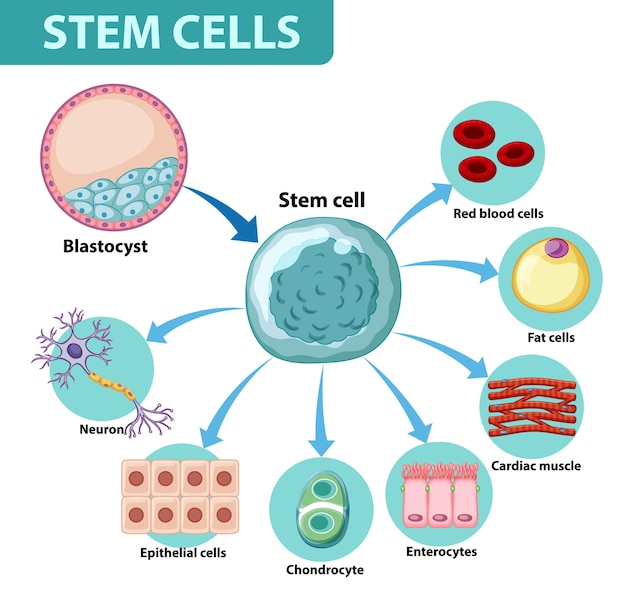
Signs and symptoms relevant to the CBC:
- Pallor, jaundice
- Fever, lymphadenopathy
- Bleeding/bruising
- Hepatomegaly, splenomegaly
- Frequency and severity of infections, mouth ulcers, recent viral illness
- Exposure to drugs and toxins including herbal remedies
- Fatigue/weight loss
White Cells
Neutrophils | Lymphocytes | Monocytes |
Basophils | Eosinophils | Platelets
Total white blood cell count may be misleading
Although the total white count may provide a useful summary, the absolute count of each of the cell types is more useful
than the total.
The total white count may be misleading; e.g. abnormally low neutrophils with an elevated lymphocyte count may produce
a total white count that falls within the reference range. As a result the total white count should not be considered
in isolation.
Neutrophils
For most adults neutrophils account for approximately 70% of all white blood cells. The normal concentration range of
neutrophils is 2.0 – 8.0 x 109/L (range can be different for different labs).
The average half-life of a non-activated neutrophil in the circulation is about 4-10 hours. Upon migration, outside
the circulation, neutrophils will survive for 1-2 days.
Neutrophils – Low
Significant levels
Most common causes
- Viral (overt or occult)
- Autoimmune/idiopathic
- Drugs
Red flags
- Person particularly unwell
- Severity of neutropenia
- Rate of change of neutropenia
- Lymphadenopathy, hepatosplenomegaly
NEUTROPENIA (LOW NEUTROPHIL COUNT)
Neutropenia is potentially associated with life threatening infection.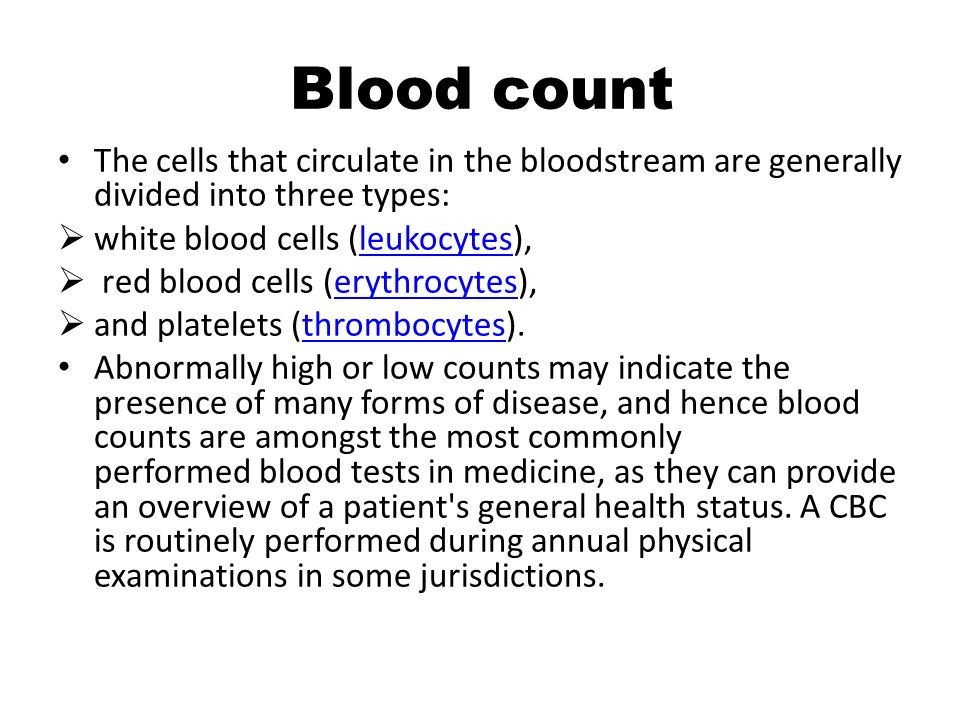 It is most significant when the total neutrophil
It is most significant when the total neutrophil
count is less than 0.5 x 109/L, particularly when the neutropenia is due to impaired production (e.g. after
chemotherapy). When the neutropenia is due to increased peripheral destruction or margination (e.g. with viral infection),
it is less certain what constitutes a significant level. These patients rarely have problems with significant bacterial
infection despite quite low neutrophil counts.
Causes
In routine clinical practice the most frequent cause of a low neutrophil count is overt or occult viral infection, including
viral hepatitis. Acute changes are often noted within one to two days of infection and may persist for several weeks.
The neutrophil count seldom decreases enough to pose a risk of infection.
A low neutrophil count is often discovered in some people as an incidental finding in the CBC result. The patient is
generally asymptomatic and the clinical examination is unremarkable. The count is usually stable on follow-up. This is
likely to be idiopathic although in some cases a neutropenia may be associated with splenomegaly or an autoimmune disease
such as lupus.
The presentation of a haematological malignancy with only an isolated neutropenia is a rare finding.
Neutropenia can be classified as:
| Classification | Neutrophil count |
|---|---|
| Mild | 1.0 – 2.0 × 109/L |
| Moderate | 0.5 – 1.0 × 109/L |
| Severe | < 0.5 × 109/L |
Drugs causing neutropenia
Although relatively rare, drug therapy may cause an acquired neutropenia in some people. The drugs most likely to be
associated with moderate neutropenia are chemotherapy and immunosuppressive drugs, antithyroid medications, antibiotics,
antirheumatics, antipsychotics and anticonvulsants.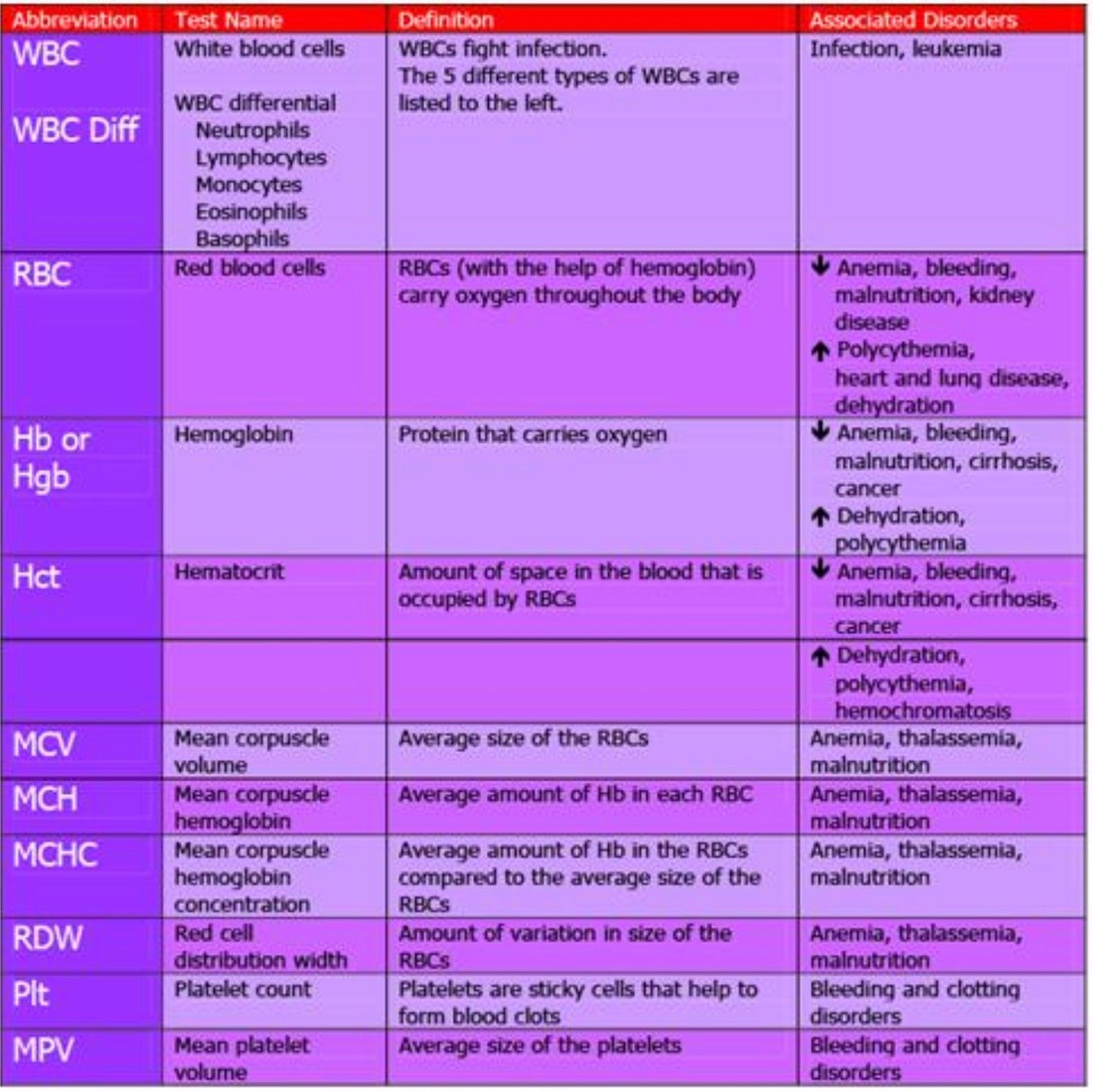 For a more comprehensive list see Neutropenia, drug
For a more comprehensive list see Neutropenia, drug
induced.
Many drugs may cause a chronic mild neutropenia e.g. nonsteroidal anti-inflammatory drugs, valproic acid.
Investigations
The history and clinical features are important for providing the clues for diagnosis and allowing the results to be
interpreted in context.
- History: frequency and severity of infections, mouth ulcers, recent viral illness, exposure to drugs and toxins, symptoms
of malabsorption, symptoms suggesting reduced immunity - Drugs (see Neutropenia, drug induced).
- Examination: mouth ulcers, fever, signs of infection, jaundice, lymphadenopathy, hepatomegaly, splenomegaly, signs
of autoimmune/connective tissue disorders - CBC: is the CBC otherwise normal (particularly haemoglobin and platelets)
- In persistent moderate neutropenia, without an infection or drug related cause, testing might include ANA (anti-nuclear
antibodies), B12, folate, SPE (serum protein electrophoresis), HIV, liver enzymes, Hepatitis B and rheumatoid factor.
Look for changes on physical examination.
Approach to patients with neutropenia
Neutrophils <1.0 x 10
9/L
The risk of significant bacterial infection rises as the neutrophil count drops below 1.0 x 109/L, but
is most marked as the count falls below 0.5 x 109/L. Careful assessment of the patient’s condition is
critical, and patients who are unwell and/or febrile with a count below 1.0 x 109/L generally need urgent
referral. Patients who are febrile but otherwise well should at least be discussed with a Haematologist. If the patient
is well and afebrile, they need to be advised to seek medical attention promptly if their condition deteriorates or they
become febrile. Well patients should have follow up blood counts within 48 hours, and if the neutropenia persists at
this level or progresses they should be discussed with a Haematologist.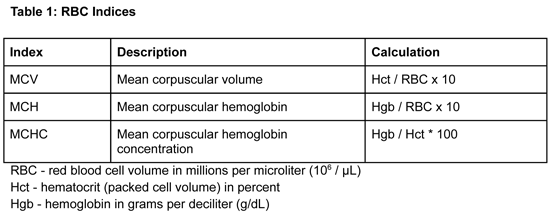
Neutrophils 1.0 – 2.0 x 10
9/L
If an isolated abnormality follow up blood counts are indicated, with frequency dependent on the severity of the neutropenia
but usually within 1-2 weeks. If the neutropenia persists for more than 6 weeks further investigation is indicated. If
it is progressive or other abnormalities develop a haematology referral, or discussion with a Haematologist, is indicated.
Drug induced neutropenias
There are specific protocols for management of clozapine induced neutropenia. Otherwise, if a drug cause is suspected
and the neutropenia is moderate or severe, Haematology referral, or discussion with a Haematologist is indicated.
Neutrophils – High
Most likely cause
- Infection/inflammation
- Necrosis
- Any stressor/heavy exercise
- Drugs
- Pregnancy
- Smoking
- CML
Red flags
- Person particularly unwell
- Severity of neutrophilia
- Rate of change of neutrophilia
- Presence of left shift
NEUTROPHILIA (HIGH NEUTROPHIL COUNT)
Neutrophils are the primary white blood cells that respond to a bacterial infection. The most common cause of marked
neutrophilia is a bacterial infection.
Neutrophils react within an hour of tissue injury and are the hallmark of acute inflammation. An excessive increase
in neutrophils (>50 x 109/L) as a reactive phenomenon is known as a leukaemoid reaction.
Neutrophils generally exhibit characteristic changes in response to infection. The neutrophils tend to be more immature,
as they are being released earlier. This is called a left shift (Figure 2). In a severe infection the neutrophils may
show toxic granulation and other toxic changes such as vacuolation and the presence of Döhle bodies.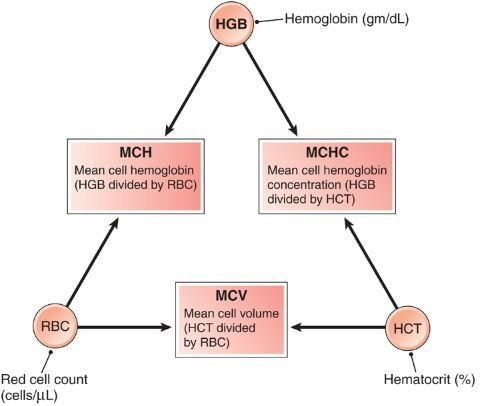
Neutrophils will frequently be increased in any acute inflammation, therefore will often be raised after a heart attack,
or other infarct and necrosis. Any stressor, from heavy exercise to cigarette smoking, can elevate the neutrophil count.
Figure 2: Diagram of left shift
A number of drugs have been demonstrated to increase the neutrophil count, including steroids, lithium, clozapine and
adrenalin. Even nervousness may very slightly raise the neutrophil count because of the effect of steroid release.
Pregnancy is associated with a slight increase in total neutrophil count demonstrating a left shift. Most laboratories
provide pregnancy specific reference ranges.
Persistent elevation of neutrophils may be a sign of chronic myeloid leukaemia (CML). Characteristic changes are a moderate
increase in neutrophil count (usually >50 x 109/L), with a left shift and a prominence of myelocytes. Basophilia
and/or eosinophilia may also be present. Chronic mild neutrophilia without left shift is very unlikely to be due to CML.
CML occurs in all age groups but most commonly in the middle aged and elderly. The annual incidence is estimated at
1 – 2 cases per 100,000.
Follow-up for high neutrophil count
For essentially well people:
- Repeat in 1 – 2 months, then
- Continue to follow (3 monthly for 12 months, then occasionally thereafter)
- stop monitoring when normal
Lymphocytes
Lymphocytes normally represent 20 – 40% of circulating white blood cells. The normal concentration of lymphocytes is
between 1.0 – 4.0 x 109/L.
There are two broad morphologic categories of lymphocytes which can be distinguished under the light microscope, large
granular lymphocytes and small lymphocytes.
Functionally distinct subsets of lymphocytes do not correlate with their appearance.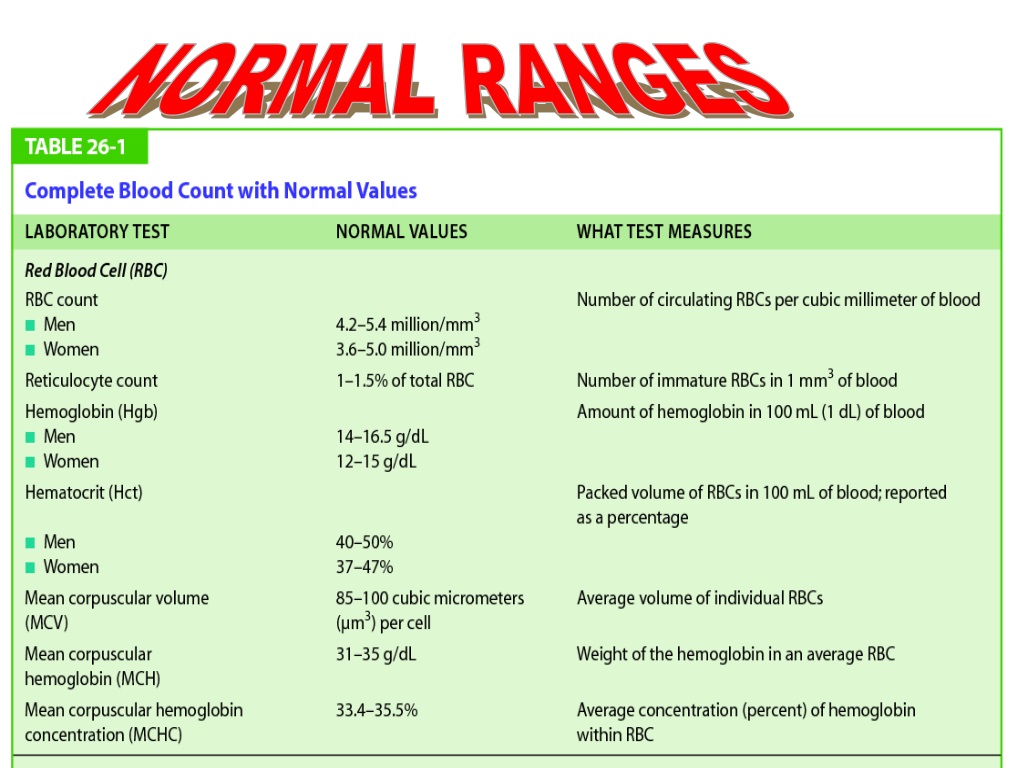
Lymphocyte – Low
- Not usually clinically significant
Lymphocyte – High
Causes
- Acute infection (viral, bacterial)
- Smoking
- Hyposplenism
- Acute stress response
- Autoimmune thyroiditis
- CLL
LYMPHOCYTOPENIA (LOW LYMPHOCYTE COUNT)
Low lymphocyte counts are not usually significant.
Characteristic decreases in the lymphocyte count are usually seen late in HIV infection, as T lymphocytes (CD4+ T cells)
are destroyed.
Steroid administration may reduce lymphocyte counts. More rarely lymphocytopenia may be caused by some types of chemotherapy
or malignancies. People exposed to large doses of radiation, such as those involved with situations like Chernobyl, can
have severe lymphocytopenia.
LYMPHOCYTOSIS (HIGH LYMPHOCYTE COUNT)
Increases in the absolute lymphocyte count are usually due to acute infections, such as Epstein-Barr virus infection
and viral hepatitis. Less commonly, increased lymphocytes may be the result of pertussis and toxoplasmosis or (rarely)
chronic intracellular bacterial infections such as tuberculosis or brucellosis.
The lymphocyte count may also be elevated in:
- Smoking (reactive)
- Hyposplenism (usually following splenectomy)
- Acute stress response – usually seen in hospital setting, uncommon in community, usually resolves within 24 hours
- Acute cardiac event
- Trauma
- Autoimmune thyroiditis
Chronic lymphocytic leukaemia (CLL) and other lymphoproliferative disorders should be considered in patients with a
persistent lymphocytosis.
- CLL is rarely encountered in people under the age of 40 but increases in incidence with age. It is often discovered
as an incidental finding on a blood count, but may be associated with lymphadenopathy, hepatomegaly and splenomegaly.
In some cases lymphocyte surface markers may be recommended for differentiating between reactive lymphocytosis and lymphoproliferative
disorders. Because they do not affect management of asymptomatic patients with early stage disease, they are usually only
indicated when the lymphocyte count is persistently >6 – 7 x 109/L; the lymphocytes demonstrate abnormal features;
other blood count parameters are abnormal; or there are signs or symptoms suggestive of lymphoma (fever, sweats, weight
loss, lymphadenopathy, hepatosplenomegaly).
Inappropriate use should be avoided because the test is particularly expensive around $500.
Follow-up
Follow-up for clinically unexplained lymphocytosis:
- In a patient who appears to be essentially well and has no alarming features, check in one to two months.
- In a patient with mild symptoms of a transient condition, rechecking when the patient is well is appropriate.
- Patients with persistently elevated lymphocyte count, accompanied by lymphadenopathy, hepatomegaly and splenomegaly
should be referred for haematology assessment.
Monocytes
Monocytes constitute between 3 – 8% of all white cells in the blood. They circulate in the bloodstream for about one
to three days and then typically move into tissues (approx 8 – 12 hours) to sites of infection. The normal concentration
of monocytes is between 0 – 1.0 x 109/L.
Monocytes which migrate from the bloodstream to other tissues are called macrophages. Macrophages have a role in specific
immunity and phagocytosis.
Monocytes – Low
- Not clinically significant if other cell counts are normal
Monocytes – High
- Usually not significant
- Watch levels > 1.5 x 109/L more closely, consider chronic infection or inflammation.

MONOCYTOPENIA (LOW MONOCYTE COUNT)
Most often, elevated monocyte counts are associated with infection and inflammatory processes and will be seen in conjunction
with other blood count changes.
Isolated increases in the monocyte count, not accompanied by other changes in the blood count, are uncommon but may
be associated with:
- Chronic infection including tuberculosis
- Chronic inflammatory conditions (e.g. Crohn’s disease, ulcerative colitis, rheumatoid arthritis, SLE)
- Dialysis
- Early sign of chronic myelomonocytic leukaemia (rare)
If levels are persistently elevated (i.e. > 1.5 x 109/L), particularly in association with suspicious symptoms,
a haematology referral may be prudent.
A mild elevation of monocytes is relatively common and does not usually require follow-up.
Basophils
Basophils are the least common of the white cells, representing about 0.01 – 0.3% of all white blood cells. The normal
concentration of basophils is 0 – 0.2 x 109/L
The function of basophils is not fully understood, but it is known that they are capable of phagocytosis and producing
histamine.
Basophils – Low
Basophils – High
Associated with:
- Myeloproliferative disorders
- Other rare causes
BASOPHILIA (LOW BASOPHIL COUNT)
Basopenia is difficult to demonstrate as the normal basophil count is so low.
BASOPHILIA (HIGH BASOPHIL COUNT)
The basophil count will only very rarely be significantly raised. When present, it may indicate a myeloproliferative
disorder, or other more obscure causes. A repeat CBC a week or two later may help.
Eosinophils
Eosinophils – Low
- No real cause for concern
Eosinophils – High
Most common causes:
- Allergy/atopy: asthma/hayfever
- Parasites (less common in developed countries)
Rarer causes:
- Hodgkins disease
- Myeloproliferative disorders
- Churg-Strauss syndrome
In most people eosinophils make up about 1-6% of white blood cells. The normal concentration of eosinophils is 0 – 0.5
The normal concentration of eosinophils is 0 – 0.5
x 109/L. Eosinophils persist in the circulation for 8 – 12 hours, and can survive in tissue for an additional
8 – 12 days in the absence of stimulation.
EOSINOPHILIA (LOW EOSINOPHIL COUNT)
Eosinopenia is difficult to demonstrate in practice because of the low frequency of eosinophils in most healthy people.
As a result a low eosinophil count should not be a cause for concern.
EOSINOPHILIA (HIGH EOSINOPHIL COUNT)
In developed countries the most common causes are allergic diseases such as asthma and hay fever, but worldwide the
main cause of increased eosinophils is parasitic infection.
Follow up
| Total eosinophil count | Follow-up |
|---|---|
| < 1.0 × 109/L | Trivial, ignore |
| Up to 1.5 × 109/L | Probably ignore |
| > 1.5 × 109/L | Consider possible causes |
Haematology assessment is appropriate for patients with persistent (more than six months) moderate eosinophilia, or
marked or increasing eosinophilia.
Platelets
Platelets are produced by budding off from megakaryocytes in the bone marrow. Each megakaryocyte produces between 5,000
to 10,000 platelets. Platelets circulate for approximately one to two weeks and are destroyed by the spleen and liver.
A normal platelet count ranges from 150 – 450 x 109/L.
Platelets – Low
Significant levels
Most common causes
- Viral infection
- Idiopathic thrombocytopenic purpura
- Liver disease
- Medications
- Hypersplenism
- Autoimmune disease
- Pregnancy
Red flags
- Bruising
- Petechiae
- Signs of bleeding
THROMBOCYTOPENIA (LOW PLATELET COUNT)
Interpretation of a low platelet count involves consideration of the clinical context.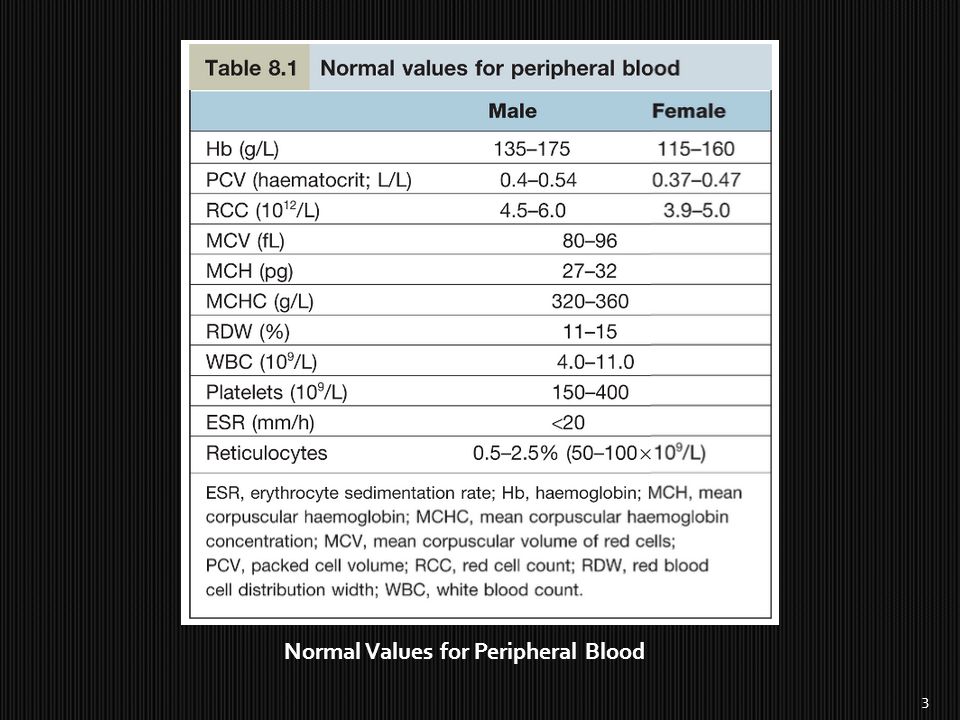 Severe thrombocytopenia is associated
Severe thrombocytopenia is associated
with an increased risk of bleeding and requires urgent assessment. It is particularly significant if accompanied by other
changes in the CBC or the platelet count is falling. Bleeding is unusual at platelet counts of >50 x 109/L
unless there is an associated platelet function defect (which is uncommon).
Causes
Thrombocytopenia may be artefactual due to a variety of causes, which are worth excluding before looking for clinical
causes, including:
- Partially clotted sample.
- Platelet clumping in the blood collection tube.
The laboratory will usually look for evidence of these, but if the platelet count is not consistent with the clinical
picture, a repeat sample may be warranted.
Causes of isolated thrombocytopenia include:
- Viral infection
- Idiopathic thrombocytopenic purpura (ITP)
- Medications
- Liver disease
- Autoimmune disease
- Hypersplenism
- HIV infection
- Pregnancy
- Bone marrow causes
Thrombocytopenia may also occur in conjunction with microangiopathic haemolysis (usually apparent on blood film examination)
in haemolytic uraemic syndrome (HUS), thrombotic thrombocytopenic purpura (TTP) and chronic or acute disseminated intravascular
coagulation (DIC). TTP should be considered if the patient is febrile, unwell or has neurological symptoms.
Follow-up
Low platelets are reasonably common, but it is important that results be interpreted in context, looking for clues to
help. Further testing that should be considered in patients with persistently low platelets includes a blood film, ANA
(anti-nuclear antibodies), HIV, Hepatitis B and C and liver enzymes. In some cases of chronic thrombocytopenia, Helicobacter
pylori serology and anticardiolipin antibodies may be indicated. Splenomegaly and lymph nodes should be checked on examination.
Splenomegaly and lymph nodes should be checked on examination.
Recommended follow up for thrombocytopenia:
| Platelet count | Referral |
|---|---|
| < 30 × 109/L | Requires urgent referral |
| 30 – 100 × 109/L | Judgment depending on context. Urgent referral if bleeding. Needs further investigation if persistent/progressive.
Refer if no cause found. |
| 100 – 145 × 109/L | Follow up counts. Investigate if persistent. Refer if progressive without obvious cause. |
Platelets – High
Significant levels
Most likely causes
- Reactive conditions e.g. infection, inflammation
- Pregnancy
- Iron deficiency
- Post splenectomy
- Essential thrombocythaemia
THROMBOCYTOSIS (HIGH PLATELET COUNT)
Elevated platelet levels may be a reactive change and will not necessarily signal any clinical problem. Generally, a
reactive thrombocytosis is not associated with an increased thrombotic risk. Rarely will a thrombocytosis reflect a myeloproliferative
disorder such as essential thrombocythaemia or myelofibrosis. These should particularly be considered if there is a chronic
persistent elevation in platelet counts (more than six months) or a very high platelet count without an obvious reactive
cause. They may also be associated with splenomegaly and the platelet count is usually >600 x 109/L (and often
much higher).
Haemoglobin and red cell indices
Low haemoglobin | Microcytic anaemia | Normocytic
anaemia | Macrocytic anaemia | High haemoglobin | Other
red cell indices
Low haemoglobin
Low haemoglobin levels are generally indicative of anaemia.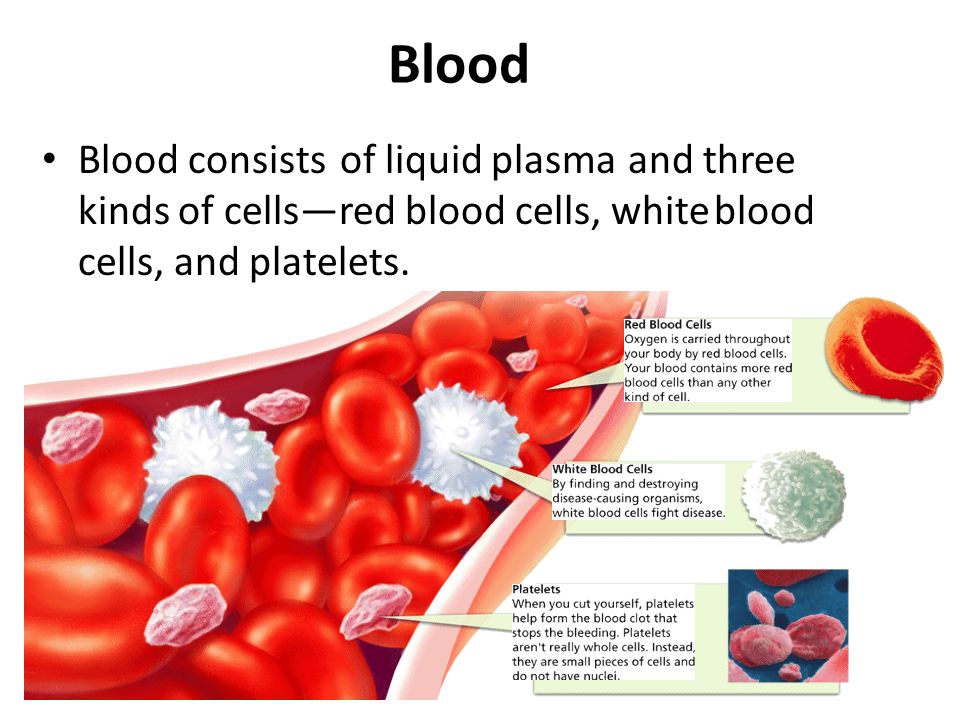 Most laboratories report a haemoglobin level of less than
Most laboratories report a haemoglobin level of less than
130 g/L for men as low. The lower limit of the reference range for women is usually presented as 115 g/L but some laboratories
use a value of 120 g/L.
Anaemia requires careful consideration. The wide differential diagnosis can be narrowed considerably by checking the
mean cell volume (MCV) and the reticulocyte count and initially classifying the anaemia as:
- Microcytic, MCV < 80 fl
- Normocytic, MCV 80 – 100 fl
- Macrocytic, MCV > 100 fl
Microcytic anaemia
The three most common causes for microcytic anaemia are:
- Iron deficiency
- Thalassaemia
- Anaemia of Chronic disease
A suggested approach to laboratory testing is shown in Figure 3.
Figure 3: A suggested approach to laboratory testing for microcytic anemia.
Iron deficiency is the most common cause of microcytic anaemia, therefore measurement of serum ferritin is the appropriate
first step. A low ferritin in the presence of a microcytic anaemia is diagnostic of iron deficiency. Patients with low
normal ferritin levels (<30 µg/L) may well have a latent iron deficient state. Iron deficiency can not be excluded
in a person with concurrent inflammation, despite a normal ferritin, and requesting a CRP may be useful to exclude inflammation.
Microcytic anaemia not related to iron deficiency
When microcytic anaemia is not due to iron deficiency it is most likely related to thalassaemia or an underlying
chronic disease.
Thalassaemias are associated with chronic microcytosis with no or mild anaemia. They are seen with
high frequency in a number of ethnic groups, including Māori and Pacific Peoples, Asians and those of Mediterranean
or Middle Eastern origin.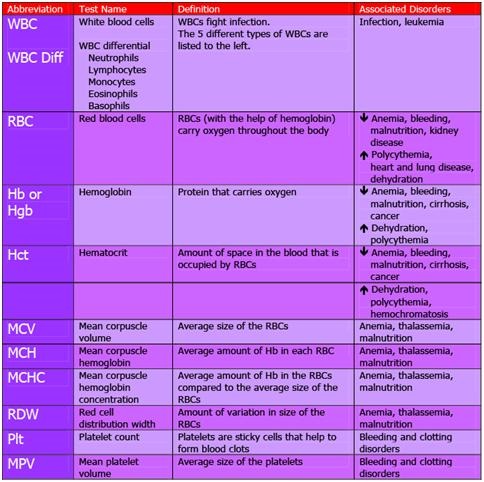 Appropriate investigation includes ferritin and a haemoglobinopathy screen. For some patients
Appropriate investigation includes ferritin and a haemoglobinopathy screen. For some patients
with milder forms of alpha thalassaemia the haemoglobinopathy screen may be negative.
Microcytic anaemia of chronic disease is most frequently associated with:
- Chronic inflammation
- Chronic infection
The microcytosis is usually only mild and many patients with anaemia of chronic disease are normocytic.
Normocytic anaemia
The causes of normocytic anaemia include:
- Bleeding
- Early nutritional anaemia (iron, B12, folate deficiencies)
- Anaemia of renal insufficiency
- Anaemia of chronic disease/chronic inflammation
- Haemolysis
- Primary bone marrow disorder
Initial investigation in primary care generally focuses on the tests listed below. These will depend on history and
examination, potential sources of bleeding, diet and general health status.
Testing may include:
- Ferritin, B12, folate
- Creatinine
- Reticulocyte count
- CRP
- Liver enzymes
- Serum Protein Electrophoresis
If the reticulocyte count is elevated the differential is small and includes blood loss, haemolysis and hypersplenism.
If the clinical features and results of these tests are inconclusive a haematological opinion may be appropriate.
Macrocytic anaemia
Common causes of macrocytosis include alcohol, liver disease, B12 or folate deficiency, thyroid disease and some drugs
(especially hydroxyurea). Macrocytosis may be present without anaemia. A reticulocytosis may also elevate the MCV and
a reticulocyte count should be checked. Severe hypothyroidism may cause a macrocytosis, but is usually clinically apparent.
Investigation in primary care includes history and examination, and laboratory testing.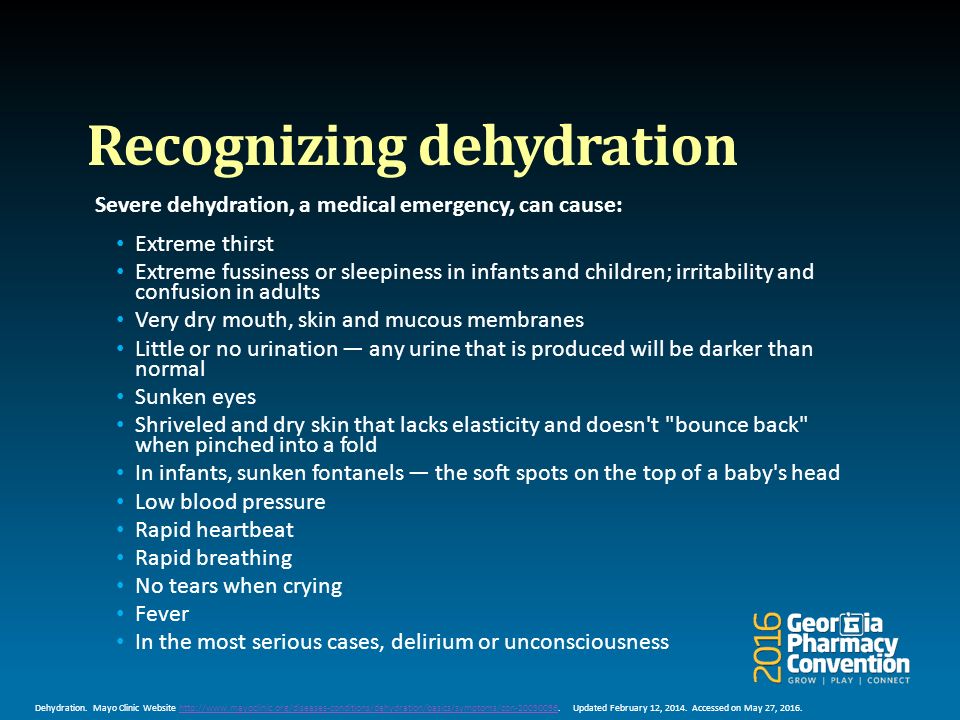 A suggested diagnostic approach
A suggested diagnostic approach
to macrocytosis is shown in Figure 4. The frequently requested tests include:
- B12 and folate
- A blood film
- Reticulocyte count
- Liver enzymes
- TSH
RAPS4 Alcohol Screening Test for dependent drinking may be useful (see below).
When these investigations are normal, and the anaemia is significant, bone marrow disorders may need to be excluded.
Figure 4: A suggested approach to laboratory testing for macrocytic anemia.
High haemoglobin
Elevated haemoglobin and PCV (packed cell volume or “haemocrit”) levels can reflect decreased plasma volume
(due to dehydration, alcohol, cigarette smoking, diuretics) or increased red cell mass (polycythaemia). Polycythaemia
may be secondary (usually to chronic hypoxia, but occasionally to erythropoietin-secreting tumours, especially renal tumours,
fibroids) or primary (polycythaemia vera). Unless the haemoglobin/PCV is very high it is usually advisable to repeat the
blood count ensuring adequate hydration.
A PCV of > 0.52 in men and > 0.47 in women needs to be confirmed in a specimen taken without venous occlusion. A confirmed
PCV above these levels, in the absence of an obvious secondary cause, is an indication for a haematological opinion because
of the high risk of stroke and other adverse events for people with polycythaemia vera.
The RAPS4 Alcohol Screening Test for dependent drinking
Ask the patient the following four questions:
- During the last year have you had a feeling of guilt or remorse after drinking?
- During the last year has a friend or a family member ever told you about things you said or did while you were drinking
that you could not remember? - During the last year have you failed to do what was normally expected from you because of drinking?
- Do you sometime take a drink when you first get up in the morning?
A positive response to any of these questions warrants further investigation.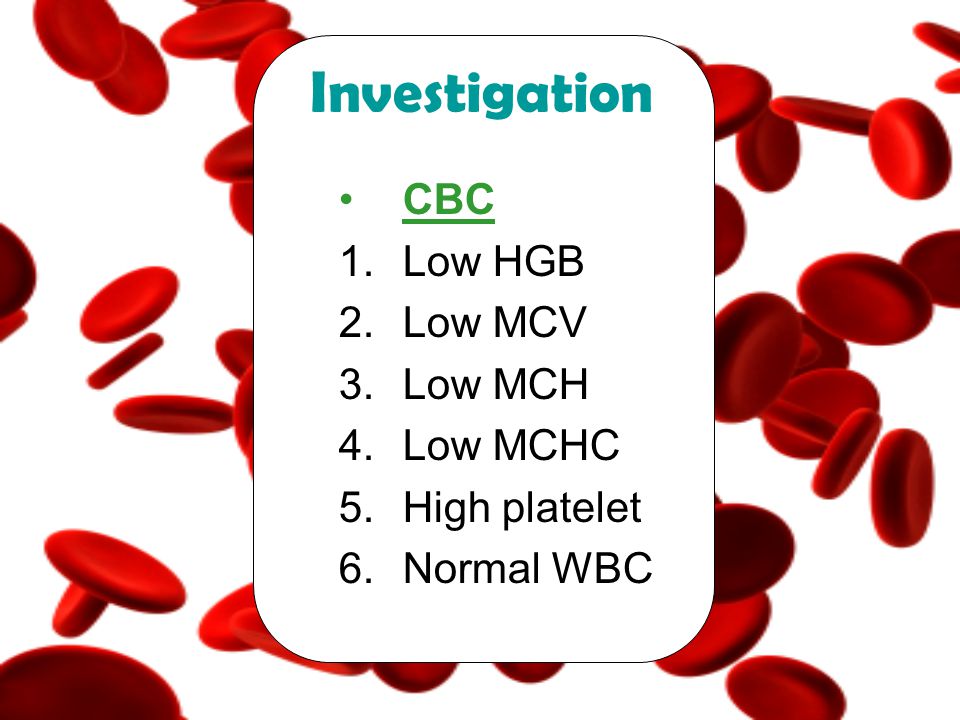
From: Cherpitel, C. J. (2000) A brief screening instrument for problem drinking in the emergency room: the RAPS4.
Journal of Studies on Alcohol 61, 447-449
Other red cell indices
These red cell indices are useful for building a “picture” of many patterns suggested by the haemoglobin.
There are limited situations in which isolated abnormalities of these indices are useful and not all of the indices are
reported by all laboratories.
Summary table
| Cell | High | Low |
|---|---|---|
| Neutrophil | Most common causes:
| Significant levels:
|
| Lymphocyte | Causes:
| Not usually clinically significant |
| Eosinophils | Most common causes:
| No real cause for concern |
| Monocytes |
| Not clinically significant |
| Basophils | Associated with:
| Difficult to demonstrate |
| Platelets | Significant levels:
Most likely causes:
| Significant levels:
Most common causes:
|
Glossary
CELLULAR ABNORMALITIES SEEN ON THE PERIPHERAL BLOOD FILM
Acanthocytes are irregularly spiculated (spikey) red cells. Found in liver disease, hyposplenism, anorexia,
myelodysplasia and abetalipoproteinaemia (very rare).
Anisocytosis is variation in red cell size. May occur in many different situations and is a non-specific
finding.
Variant Lymphocytes (reactive lymphocytes) are lymphocytes that, as a result of antigen stimulation,
have become larger than usual. Usually the result of infection, especially viral.
Basophilic stippling the presence of small granular bodies within the red cell cytoplasm. This occurs
when there is accelerated red cell production and cells with immature cytoplasm are released into the circulation or else
with dyserythropoiesis (abnormal production of red cells).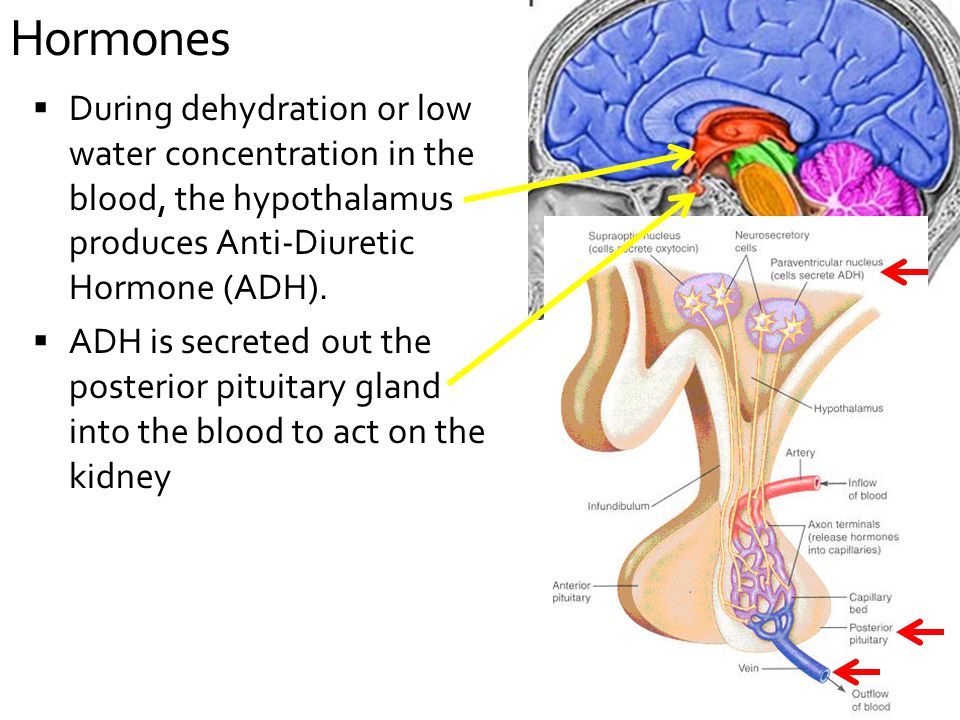 May be found in lead poisoning, thalassaemia or other causes
May be found in lead poisoning, thalassaemia or other causes
of significant anaemia.
Blast cells are very immature precursor cells which are not usually seen outside the bone marrow. Their
presence in the peripheral blood most commonly indicates acute leukaemia, myelodysplasia or myelofibrosis.
Burr cells (echinocyte or crenated cell) are irregularly shaped red cells that may be found in patients
with uraemia or as an artefact in older samples.
Dimorphic picture/appearance describes heterogeneity in the size of red blood cells, usually with two
distinct populations. It can be found in partially treated iron deficiency, mixed deficiency anaemias (e.g. folate/B12
and iron together), following transfusion, or in cases of sideroblastic anaemia.
Döhle bodies appear as a small, light blue-grey staining area in the cytoplasm of the neutrophil.
They are most commonly found in severe infections, but may also be seen with poisoning, burns and following chemotherapy.
Elliptocytes are red blood cells that are oval or cigarshaped. They may be found in various anaemias,
but are found in large numbers in hereditary elliptocytosis. Which is a reasonably common but usually clinically insignificant
red cell membrane disorder.
Howell-Jolly bodies are nuclear remnants found in red cells after splenectomy, in cases of megaloblastic
anaemia and occasionally in cases of myelodysplasia.
Hypersegmented neutrophils. See “Right shift”
Hypochromia is reduced staining of red cells seen commonly in iron deficiency anaemia and also in thalassaemia
and sideroblastic anaemias. Usually associated with microcytosis.
Left shift describes immature white blood cells that are released from the marrow when there is a cause
of marrow outpouring, typically due to infection.
Leucoerythroblastic anaemia/picture describes a combination of nucleated red cells and a left shift
of granulocytes. It may be seen with severe infection, blood loss, hypoxia, haemolysis or else with bone marrow infiltration,
fibrosis or dysplasia.
Leukaemoid reaction is an excessive marked reactive leucocytosis, usually consisting of granulocytes.
It is seen after burns, in cases of severe infection, following an acute haemolysis or prolonged hypoxia.
Macrocytosis is the presence of abnormally large red cells found when erythropoiesis is disordered
or when red cells are released prematurely from the marrow. See here for causes.
Microcytosis is the presence of abnormally small red cells often found in association with hypochromia.
See here for causes.
Metamyelocytes, myelocytes and promyelocytes are increasingly immature white cells with a “left
shift”.
Neutropenia, drug induced. Many drugs have been implicated including:
Analgesics and anti-inflammatory agents include phenylbutazone, indomethacin, ibuprofen, acetylsalicylic
acid, barbiturates, mesalazine, and quinine.
Antimicrobials include penicillin, cephalosporins, vancomycin, chloramphenicol, gentamicin, clindamycin,
doxycycline, flucytosine, nitrofurantoin, minocycline, metronidazole, rifampin, isoniazid, streptomycin, mebendazole,
pyrimethamine, levamisole, sulfonamides, chloroquine, hydroxychloroquine, dapsone, ciprofloxacin, trimethoprim, imipenem/
cilastatin, zidovudine, acyclovir and terbinafine.
Antipsychotics, antidepressants and neuropharmacologics include phenothiazines (chlorpromazine, thioridazine,
prochlorperazine, trifluoperazine, trimeprazine), clozapine, risperidone, imipramine, desipramine, diazepam, chlordiazepoxide,
thiothixene and haloperidol.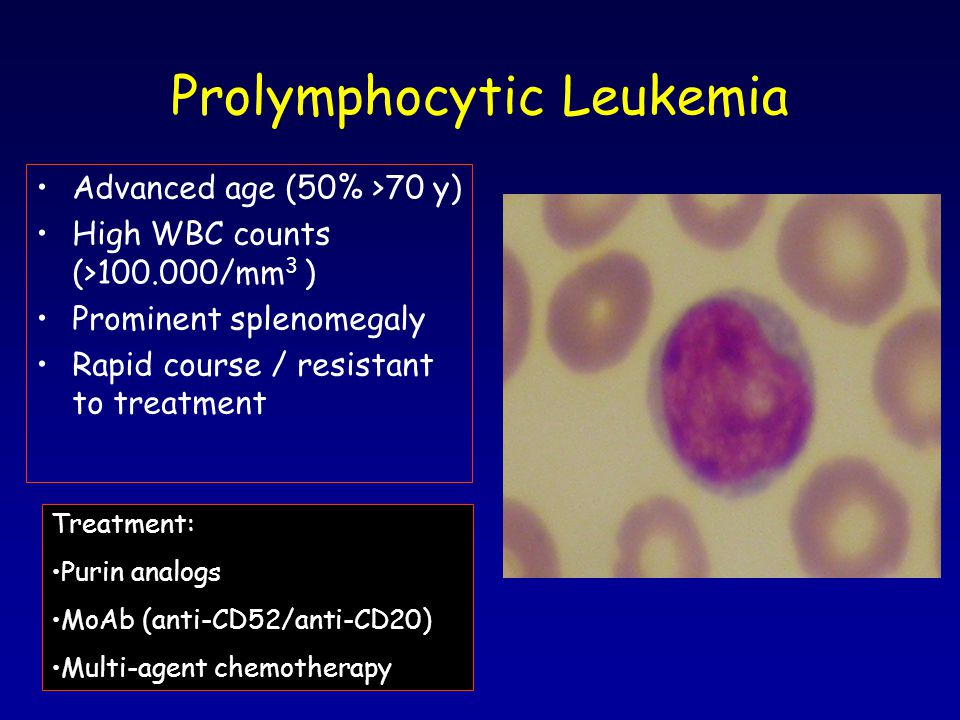
Anticonvulsants include valproic acid, phenytoin and carbamazepine.
Antithyroid drugs include thiouracil, propylthiouracil, methimazole and carbimazole.
Cardiovascular system drugs include procainamide, captopril, propranolol, methyldopa, quinidine, nifedipine
and ticlopidine.
Other drugs include cimetidine, ranitidine, allopurinol, colchicine, famotidine, bezafibrate, flutamide,
tamoxifen, penicillamine, retinoic acid, metoclopramide, ethanol, chlorpropamide, tolbutamide, thiazides, spironolactone,
acetazolamide, IVIG and levodopa. Some herbal remedies.
Nucleated red blood cells are immature red blood cells. These are usually seen in newborn infants and
in patients with severe bone marrow stress. Other causes are similar to those for a leucoerythroblastic blood picture
(see above).
Pappenheimer bodies are the granules seen in siderocytes found after splenectomy and in association
with iron overload and dyserythropoiesis.
Poikilocytosis is the variation in cell shape usually seen in iron deficiency anaemia.
Polychromasia is the heterogeneous staining of RBCs of different ages, and reflects an increase in
younger cells (reticulocytes), which appear blue. It may occur after haemorrhage, haemolysis, dyserythropoiesis and treatment
with haematinics such as iron and vitamin B12.
Reticulocytosis is the presence of >0.8-2% of total red cell count in the form of reticulocytes. They
are young, oversized red cells that are present when the marrow is actively producing red cells. They are increased after
haemorrhage, haemolysis or following treatment of deficient patients with haematinics.
Right shift is characterised by the presence of hypersegmented neutrophils (five or more lobes to their
nucleus), seen most commonly in B12 and folate deficiency.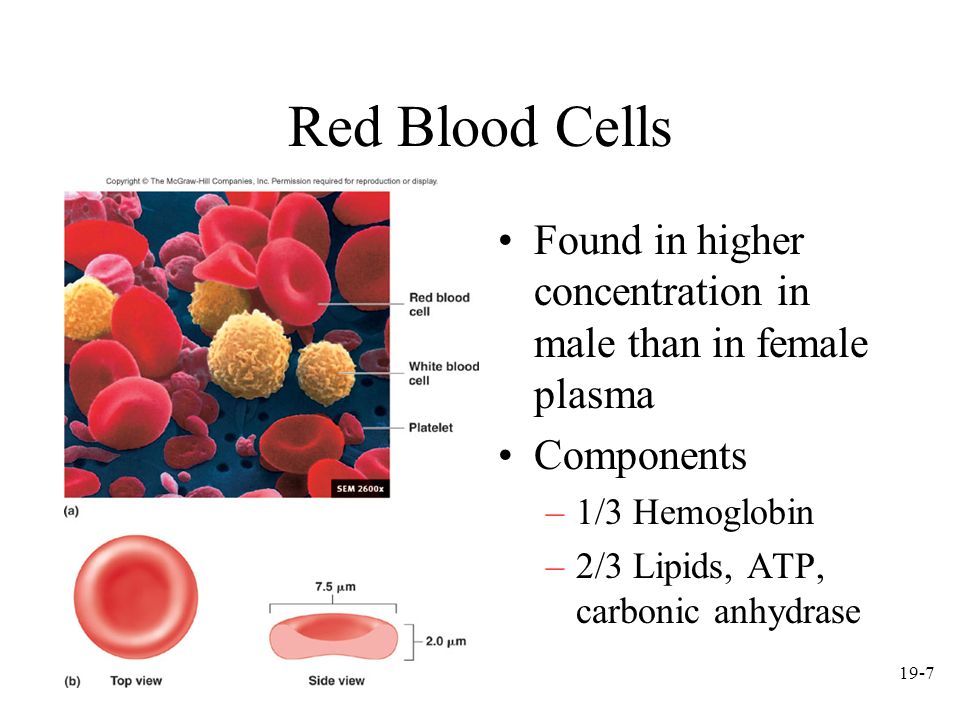 Other rarer causes include infection, uraemia, and myelodysplastic
Other rarer causes include infection, uraemia, and myelodysplastic
syndrome. Confusingly a right shift can also be seen in iron deficiency.
Rouleaux are stacked/clumped groups of red cells caused by the presence of high levels of circulating
acute-phase proteins which increase red cell “stickiness”. They are often an indicator that a patient has
a high ESR and are seen in infections, autoimmune conditions and myeloma.
Schistocytes are red cells fragmented by their passage through intravascular strands of fibrin, found
in cases of microangiopathic haemolysis.
Spherocytes are overly-round or spheroid red cells that usually indicate active haemolysis. They are
seen more rarely in cases of hereditary spherocytosis.
Stomatocytes are red blood cells with an oval or rectangular area of central pallor, sometimes referred
to as a “mouth”. These cells have lost the indentation on one side and may be found in liver disease, electrolyte
imbalance and hereditary stomatocytosis.
Target cells are red cells with a central area of increased staining, surrounded by a ring of lighter
staining and then a further ring of dense staining at the edge of the cell, giving an appearance similar to an archery
target. They may be found in liver disease, thalassaemia, and other haemoglobinopathies. They occur occasionally in small
numbers in iron deficiency anaemia.
Teardrop cells (dacrocytes) are teardrop shaped red blood cells found in: iron deficiency, megaloblastic
anaemia, thalassaemia, some haemolytic anaemias, marrow infiltration and myelofibrosis and other myeloproliferative disorders.
90,000 real and fictitious risks / Blog / Clinic EXPERT
How much water should you drink per day and what risks can be caused by non-compliance with the correct regimen? On the Internet, you can find a lot of advice and conflicting information on this topic, and some companies directly claim that it is their drinks that can save you from dehydration.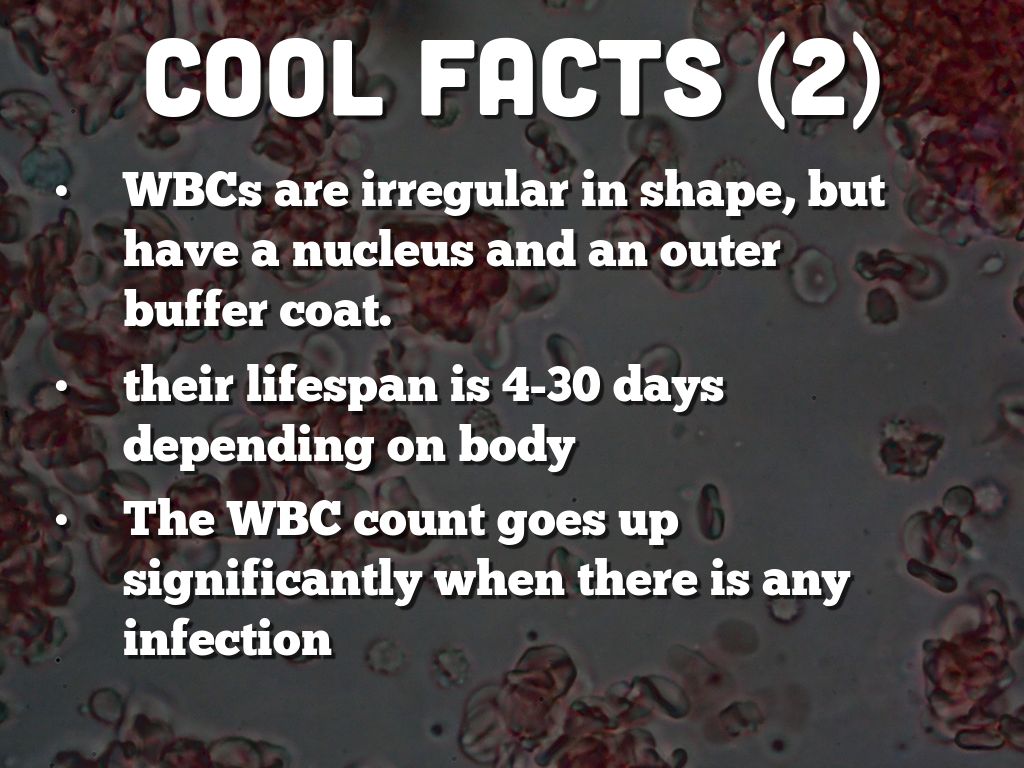 It’s actually not that simple. In this article, we will help you deal with this issue.
It’s actually not that simple. In this article, we will help you deal with this issue.
Often we do not think about how much water we consume.There is another extreme – people painstakingly monitor the regular replenishment of fluid in the body and always try to keep some kind of soft drink with them.
The truth is that most healthy people rarely experience severe dehydration and even less water poisoning.
Numerous metabolic mechanisms of our body work 24 hours a day to maintain a constant water-salt balance within us – they control both the intake of water into the body (including the feeling of thirst) and its excretion from the body.
But it should be noted that certain groups of the population are indeed at increased risk of 90 014 dehydration, 90 014 these primarily include 90 013 children and the elderly, athletes, as well as those who are prone to loose stools (with irritable bowel syndrome, inflammatory bowel disease, chronic pancreatitis and other gastrointestinal diseases).
In the process of supporting daily activities, our body uses a certain volume of water every day, primarily for the transfer of active beneficial molecules and the elimination of toxins from the body.The volume of water used can vary depending on environmental conditions (for example, dry hot or humid cool air), as well as the needs of our body. For example, a woman’s body during menstruation tends to retain water, which can slightly increase body weight and lead to some swelling, most often in the legs. This is a physiological, natural process that stops after activating the necessary systems and removing excess fluid.
People who like to eat salty foods retain more fluid in their bodies.It is caused by excess sodium intake. It is for this reason that in any pathological conditions accompanied by edema, it is recommended to limit the use of salt with food. This also applies to people with high blood pressure – limiting salt intake allows you to avoid pressure surges, and sometimes reduce the amount of antihypertensive drugs taken.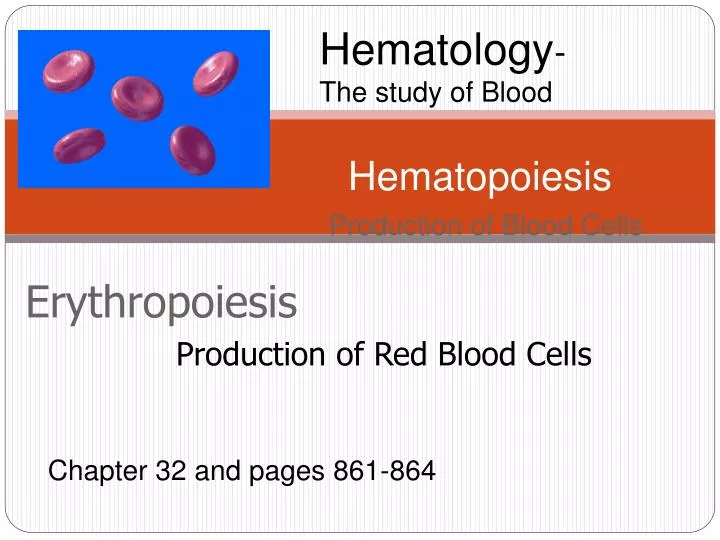
How does thirst quenching work?
Water intake is regulated through behavioral mechanisms – through the development of feelings of thirst or satiety.When a person loses a lot of water, and the concentration of electrolytes in the body remains the same, the blood becomes too “viscous”. The blood supply to the salivary glands is rearranged, which leads to a decrease in salivation, as a result, a person experiences a feeling of dry mouth and thirst. The hypothalamus determines the characteristics of the body’s water-salt composition and sends signals that regulate urine production and sweating. As a result, the excretion of water from the body with sweat, urine and stool is reduced, which allows you to avoid dehydration for some time.
Risks of dehydration
Dehydration is not only uncomfortable for a person, but can also be detrimental. With a decrease in the water content in the body, attentiveness, the ability to perceive and process information are disturbed, mood worsens, headaches and fatigue develop. Significant dehydration can lead to a significant disruption in the functioning of the body, up to 90,013 death.
The first sign of dehydration is thirst.
In this way, the body gives a signal to the person that it is necessary to immediately replenish the water reserves in the body. Thirst usually develops when the water deficit is approximately 200-400 ml. The protective mechanism prevents further loss of fluid from the body: sweating and urination are reduced. If a person is in a hot atmosphere, then this can lead to overheating of the body and the development of heatstroke. That is why it is important to listen to your feelings and, when a feeling of thirst arises, not to delay with its satisfaction.
In the elderly, the feeling of thirst can be dulled due to age-related changes in the body and especially in the nervous system. Therefore, unless contraindicated, doctors generally recommend that older adults monitor and drink water regularly throughout the day to stay hydrated. Some elderly people, unfortunately, avoid drinking liquids because they do not want to use the restroom again. This happens especially often before going to bed. However, this approach can be detrimental to the health and quality of life .
Some elderly people, unfortunately, avoid drinking liquids because they do not want to use the restroom again. This happens especially often before going to bed. However, this approach can be detrimental to the health and quality of life .
What makes you thirsty
The following factors increase your need for water:
- Alcohol
- Increased fiber in the diet
- Certain diseases associated with water-salt imbalance, such as diabetes and kidney disease
- Being on an airplane or rooms with forced air circulation
- stay in mountainous areas
- hot and dry weather
- increased intake of proteins, salt and sugar, carbohydrate deficiency (ketosis)
- taking diuretics
- physical activity
- pregnancy or breastfeeding
- diarrhea , vomiting
- rise in body temperature
- surgery, blood loss or burns
- infant or advanced age.
Let’s illustrate one of the above points with an example. It is known that active sports training significantly accelerates metabolic processes in the body, which is accompanied by increased sweating. All this leads to a significant increase in water demand. When training takes place in a hot atmosphere or in the sun, the need for water is even higher. For example, during intense physical activity, an athlete may additionally lose about 1.5-2 liters of water per hour.
Exposing Myths
Many publications on the Internet contain myths about dehydration:
Myth # 1.
To moisturize the skin, fight wrinkles, wrinkles and improve the condition of the skin, you need to drink 8 cups of water a day.
The fact is that the use of additional fluid by people who are healthy and already taking enough water, does not improve the condition of the skin. The body will remove excess fluid naturally, which will in no way affect the preservation of the elasticity of your skin.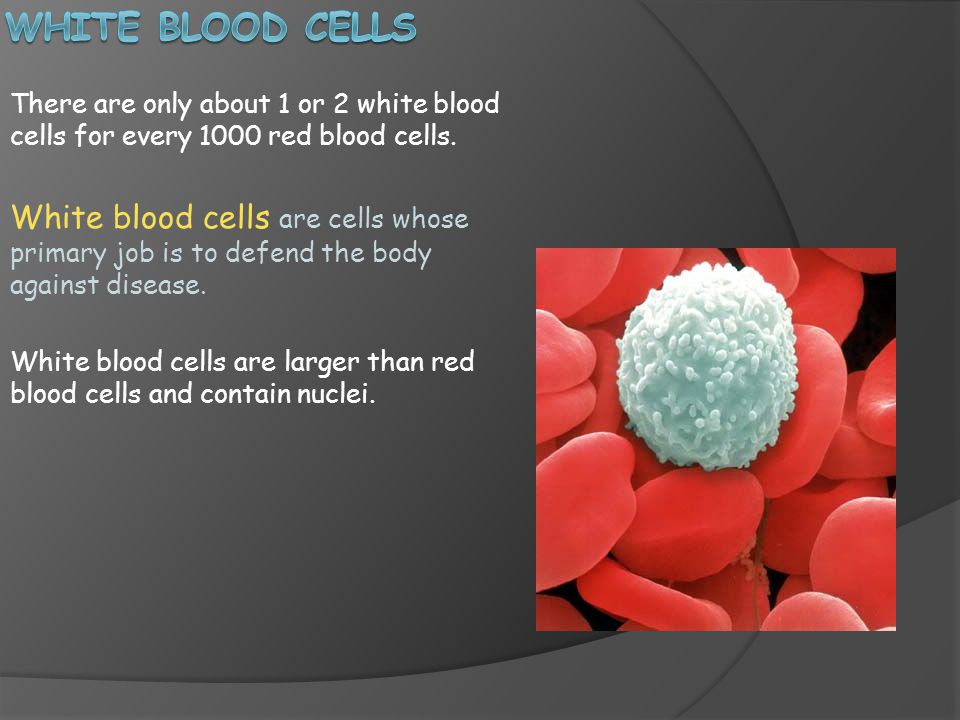 It is correct to assess the need for fluid in your body, taking into account the intensity of physical activity and the presence of any pathological processes in the body and the subsequent selection of moisturizing creams with a beautician.
It is correct to assess the need for fluid in your body, taking into account the intensity of physical activity and the presence of any pathological processes in the body and the subsequent selection of moisturizing creams with a beautician.
Myth number 2.
To avoid dehydration, you should consume regular water in addition to drinks.
Medical research shows that the lack of water can be compensated not only with ordinary water, but also with juices, herbal teas, soups, broths, etc. However, in case of significant dehydration , it is necessary to drink exactly water, as this will allow you to quickly restore the water-salt balance in the body without consuming additional calories.
Myth number 3.
Darkening of the urine clearly indicates dehydration.
Indeed, when there is a lack of water in the body, the concentration of excreted urine occurs and it becomes slightly darker. However, darkening of urine can also occur with certain foods, such as beets, asparagus, and other foods, and may be a symptom of liver and kidney disease.
Myth number 4.
Experts have established the exact daily volume of water needed by a person.
Unfortunately, there is no magic exact dose that is equally good for everyone. We are all unique and we live our own unique lives. Although researchers are still working to determine the optimal amounts of water consumption for both healthy people and different groups of patients.
Intake and exit of water from the body
Every day, water enters our body with drinks and food, and a certain amount of water is formed during metabolism (for example, when burning fats).On average, about 1450-2800 ml of water enters the human body daily:
- drinks (550-1500 ml)
- food (700-1000 ml)
- metabolism (300 ml).

And with the help of the work of the skin and lungs, the gastrointestinal tract and the urinary system, the same volume of water (1450-2800 ml) is excreted daily from the human body:
- urine (500-1400 ml)
- skin evaporation (450–900 ml)
- exhaled air (350 ml)
- stool (150 ml).
However, when the intensity of the body’s work (physical activity, various diseases) changes, our body needs a larger volume of incoming fluid.
How much should I drink every day?
To answer this question, “banal” and generally available tests will help you – a clinical blood test with the determination of hematocrit, a general urine test with the determination of specific gravity.
For a more informative assessment of the presence of fluid in the body, bioimpedansometry will help – according to the results of the procedure, you will see how much fluid, fat mass and lean mass in your body contains, including bones, muscles and internal organs.
Based on the results of these examinations, the doctor will be able to say for sure whether there is a need to correct the drinking regime and not only.
Which water is better to drink?
Store counters and catering chains offer us a fairly wide selection of drinks.
Often our attention is drawn to carbonated drinks. It must be remembered that behind their pleasant taste there are insidious excess calories and sugar. That’s right – read the packaging and evaluate every time – why do I buy and drink this drink.
This problem is especially relevant for developed countries, because many people drink drinks not to quench their thirst, but due to the “close availability” and to obtain pleasant taste sensations, stimulate the nervous system with caffeine and sugar, or to relax through alcohol. The sports industry has also invented a new kind of soft drinks – sports. However, most experts are very skeptical about the benefits of sports drinks for maintaining water-salt balance and improving training results.
However, most experts are very skeptical about the benefits of sports drinks for maintaining water-salt balance and improving training results.
Fruit juices contain fruit pulp and a substantial amount of water, which also allows you to quench your thirst. It is correct to use natural freshly squeezed juices if necessary with the addition of pure water. Industrial juices may contain sugar and preservatives, the frequent use of which can have a harmful effect on health.
In order to maintain good health and health, it is recommended to use clean water, low-mineralized water (up to 2-2.5 g of minerals per liter), of weak black and green tea, herbal teas (chamomile, peppermint, willow tea). Remember that drinking green tea with milk has a mild diuretic effect and will help save you from feeling puffy and heavy in your legs.
Conclusion
Water is an important source of wellness. The human body is a self-regulating system, therefore, to maintain health, it is enough just to listen to it and consume the amount of water you need, without limiting yourself.Try to get your water from low-calorie, sugar-free drinks.
How the quantity and quality of water affects the body
If the body of an adult does not receive 1.5-2 liters of clean water every day, then it is slowly destroyed, doctors say.
Preventive medicine specialist Yekaterina Stepanova told Sputnik Belarus that the body needs to be kept under control. Life begins in water, develops in water (amniotic fluid) and leaves the body if the body is more than 60% dehydrated.
According to the WHO definition, life is a constant reorganization of amino acids in a living organism in water, with water, with the help of enzymes. And if you are not indifferent to your own health and how long you will live on this Earth in general, it is important to accept this postulate “with water and in water”, otherwise it is simply stupid to carry on any conversations about health.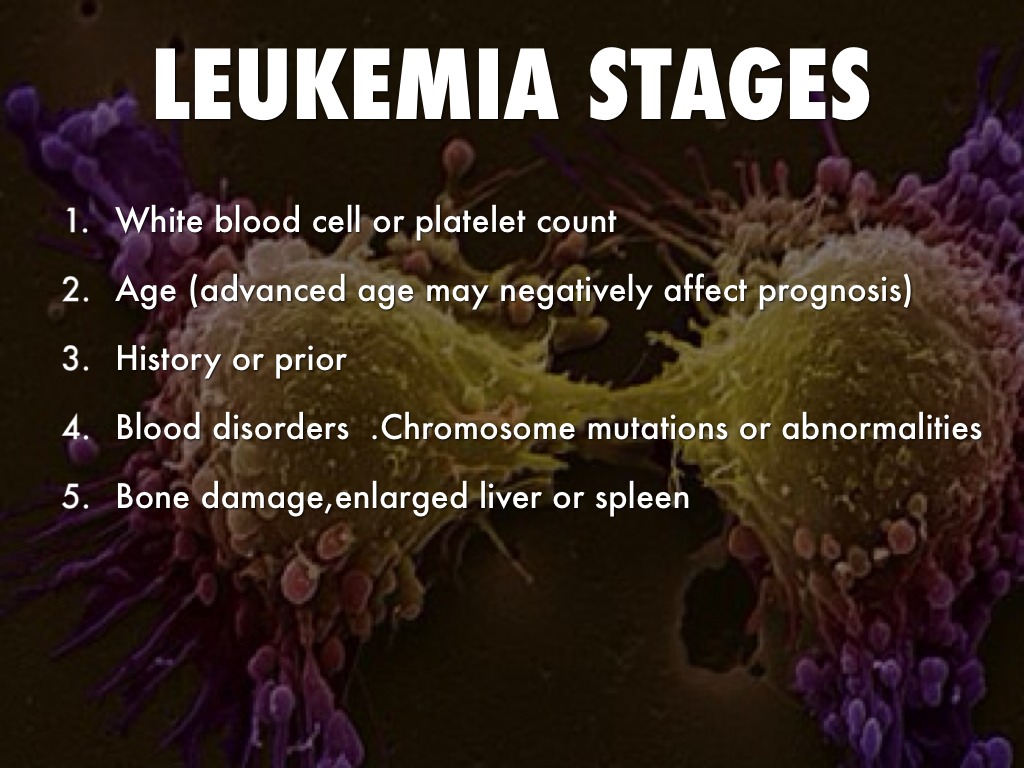
Why is water so important?
Everything matters here – both quantity and quality. If you keep the body on a “starvation diet” in terms of water – you are not just taking risks, you are systematically destroying it.Lack of water prevents chemical processes in the body from proceeding normally. Dehydration and disturbance of the pH of the environment provoke many diseases.
The same can be said about the consumption of low-quality water. In order for water to reach the cell and get into it, it must be what the body needs. Otherwise, he will have to carry out “filtration” work himself and adapt the water for himself, spending vital resources on it.
Why is the amount of water so important?
Natural rate of consumption of pure water (not tea, compote or coffee, because cells do not live in tea), namely water – 30 ml per 1 kg of physiological weight per day.Physiological weight and the weight we “ate” are two different things. Physiological means the amount of growth minus 110. On average, it turns out about 1.5-2 liters per day. Approximately the same amount of urine should be excreted by the body per day. If you want to be healthy, do not forget this axiom of life: drink 1.5-2 liters of pure water and excrete the same amount of urine at knocks. It is an algorithm for the movement of fluid and life.
How to understand that we are not drinking enough?
There are many symptoms that signal that we are close to dehydration and that all 12 systems in our body are affected.
- just thirsty. This is a signal that the heart and brain are close to dehydration. The brain is the central nervous system, it is the speed and number of nerve impulses from the brain to organs and cells. In fact, this is the speed of our life.
- breathing becomes more frequent, shortness of breath appears. The respiratory system suffers from lack of water, because we get a significant part of oxygen from water. If it is not enough, the body tries to make up for the deficit by breathing, the number of respiratory movements increases, and shortness of breath begins.

- thirst while eating. This is a symptom that the saliva is thick and the process of primary digestion of the food lump does not occur. The digestive system suffers too.
- increases the concentration of hydrochloric acid in the stomach, which is also called high acidity. The body always secretes the same amount of acid, the question is how much water it can afford to give for its dilution. If you dilute 2 grams of acid in a glass, there will be one concentration, and if you dilute the same amount in half a glass, you get a completely different concentration.And if in 1/3 cup?
- Professionals have no concept of “high” or “low” acidity. It’s all about the amount of added water. If there is little water and its pH is not slightly alkaline, then the cells that secrete hydrochloric acid partially atrophy, so-called low acidity is formed. This is a violation of the water-drinking and alkaline balance. Why does it get easier after the sanatoriums? Because in many health resorts, the basis of treatment is water and alkalization of the body.
- problems with stool.From a lack of water, constipation begins, microflora suffers, rot is formed, which is not excreted for a long time. Its toxins are reabsorbed into the bloodstream, self-intoxication begins, sometimes with an increase in temperature.
- bile thickens, gallstones are formed.
- there are irregularities in the work of the excretory system. Normally, urine is sour. If 1.5-2 liters of water is not drunk, then 1.5-2 liters of moderately acidic urine will not be released. The excreted urine will be concentrated and acidic.Essentially, it is vinegar that destroys kidney cells. They won’t be able to filter blood well. In addition, due to a lack of urine, sand is formed in the bladder, which is not washed out again due to the small amount of fluid, and stones are formed in the bladder. And if an infection joins, inflammatory diseases begin: cystitis, pyelonephritis.
- appears overweight. After all, this is a strategic reserve of the body. For a rainy day. Remember when there was an ad at the entrance that all the water would be turned off for 5 hours.What did we do? We collected water in any empty container. So the body stores fat. A fat molecule is made up of a molecule of water and energy.
- the musculoskeletal system suffers. If there is not enough correct weakly alkaline water with the desired pH, then the joint fluid dries up and the wear of the cartilage begins, as a result – arthritis and arthrosis.
Why is thick blood so dangerous?
But the most dangerous thing that happens to our body as a result of lack of water is blood thickening. If there is not enough water in the blood, red blood cells stick together, which carry oxygen in our body.
It is difficult for the heart to push such blood, so that it carries oxygen to the small vessels-capillaries. The brain gives a signal – to narrow the vessels in order to increase the pressure and with the help of pressure to push the blood to the capillaries. But then a person takes pills that reduce blood pressure. So it relieves the symptom, but not the condition of the body. The brain responds by asking the heart to beat faster and take less rest off the day. Consequently, the pulse rises. But even here a person comes to his aid and takes pills that lower the pulse.The brain continues to “strain” the heart, the resource of the heart muscle is depleted and a rupture – that is, a heart attack – of varying severity may occur.
What should be the water?
So, the water that you can drink must be:
- clean, free of chemical impurities, dirt and impurities.
- with the correct, always negative ORP (redox potential – this is how the activity of electrons participating in redox reactions in a liquid medium is called).ORP rate: – 100 – 200 mV (millivolts). A healthy cell perceives water with a minimum value of 50 mV. With this value, all vital processes take place in it, if the value of the indicator shifts towards a positive charge, the body will spend energy by all means on adaptation to the physiological norm, otherwise the cell will die.
- slightly alkaline, because our body lives in a slightly alkaline environment and the pH of our main fluid – blood – 7.43. If the water is shifted to the acidic side, then the body will give up its alkali metals to equalize the pH (Ca, Mg, K and others), and these are teeth, nails, hair, joints, bones.
- without heavy metal salts. Hardly anyone has a desire to glow in the dark and burn slowly.
- soft. In hard water, fats curl up, soap does not wash – dishes can only be washed with a good portion of Fairy. But the body does not have this valuable remedy, it will again spend its energy and its resource for softening water, because fats in the body are deposited, including in the vessels, which become difficult to break down. The result is predictable: increased blood pressure, strokes and heart attacks.
- with correct surface tension. No matter how trite, but the water should be liquid, not viscous.
- Biologically Safe. It should be free of viruses, bacteria, parasites, fungi and lamblia. Sometimes, due to indifference to oneself, a person can easily become the owner of serious diseases (hepatitis A, dysentery).
- with a good structure and information field (a frozen crystal of pure structured water under a microscope is a beautiful snowflake). Water remembers both words and events.From this, its structure changes in a positive or negative direction for us, since we are 75-80% water. Do not use foul language!
- the desired temperature. The optimum temperature for us is 36-37 ° C. So the body will not waste energy on heating or cooling it. This is especially important for the elderly, as their heat exchange is often impaired. That is why in southern countries hot water or tea is drunk in the heat. This makes sense, because hot water promotes perspiration, and then toxins, poisons and acid are released from the body.Perhaps that is why there are many centenarians in these countries.
If water does not meet all these properties, the body will pass it through the large intestine in transit (this is where water is absorbed in our body).
If you feed the body with the wrong water for a long time, it will be healthy as long as it is able to make for itself structured water similar to intracellular water from the wrong water. When the body’s resource is depleted, it will begin to ache and dry out.
How to drink water?
The rules are simple.As soon as you woke up – drink 1-2 glasses of warm weakly alkaline water – wash your cells after active night processes, as you wash your face. During the day, water is taken half an hour before meals or 2 hours after meals, so as not to dilute the gastric juice immediately before or during a meal, because it is important for digestion.
Do not forget the most important rule: water is life! It comes to us drop by drop from nature. Nature that gives us beauty! Water is a living structure, it cannot disappear, it has no form, it is free!
Water cleans and heals, remember the feast of Epiphany, what an uplift people feel after cleansing with water! Love water, it is always ready to help us if we ask for it.Attitude to water is attitude to oneself. Because we are 75-80% water.
Love water, pour it into beautiful decanters, not cans. Say words of gratitude to her, joy when you drink it. And she generously, like a caring mother, will warm, soothe and heal your body and soul!
Official website of the Kulunda Central District Hospital – Prevention of blood pressure
Arterial pressure deviation – ways of treatment and prevention
What is blood pressure?
Blood pressure is necessary to supply the organs of our body with oxygen and nutrients.
In the human body, blood is located in the lumen of the blood vessels. Blood vessels are represented mainly by arteries and veins. The blood passing through the blood vessels exerts constant pressure on the vascular wall. Blood pressure depends on the pumping function of the heart and the elasticity of the blood vessels.
In the human body, blood is located in the lumen of the blood vessels. Blood vessels are represented mainly by arteries and veins. The blood passing through the blood vessels exerts constant pressure on the vascular wall.Blood pressure depends on the pumping function of the heart and the elasticity of the blood vessels.
Normally, the heart muscle contracts and relaxes on average 60-80 times per minute. At the same time, the heart pumps blood under pressure into the arteries in order to provide the organs of our body with oxygen and nutrients. As a result of repeated branching, blood vessels acquire the character of capillaries. With sufficient pressure, the blood vessel system resists blood flow.
The maximum pressure, known as systolic blood pressure, is recorded at the time of heartbeat. The stage of the heart cycle during which blood pressure rises is known as systole. The pressure drops to a minimum between two heartbeats when the heart muscle relaxes. At this point, diastolic blood pressure is recorded. Relaxation of the heart and lowering blood pressure occur as part of another stage of the cardiac cycle – diastole.
Blood pressure is measured in millimeters of mercury (mmHg). Systolic blood pressure is always listed first. It is followed by the indicator of diastolic pressure. For example: 120/80 mm Hg. Art. means the systolic blood pressure is 120 mmHg. Art., and diastolic pressure reaches 80 mm Hg. Art. One mmHg Art. Is the pressure exerted by one millimeter (mm) of mercury (mercury). 1 mmHg Art. equal to 0.00133 bar
Causes of high blood pressure
Blood thickening, resulting from dehydration of the body.If a person does not drink clean water for years, replacing it with other drinks, then gradually the water leaves various tissues, including blood, and the blood thickens.
Increased amount of cholesterol in the blood. The blood becomes oily (insufficient enzyme production). Imagine that there are large cholesterol molecules in the blood. In order to push through such blood, the heart will again have to start all the same two mechanisms: to contract or constrict the vessels more strongly.
Protein in the blood.The blood becomes viscous. Protein is the poorly digested remnants of our food. They also thicken our blood. This is due to insufficient production and activity of enzymes. It’s hard for the heart to pump thick blood …
High adrenaline level. If a person is constantly nervous (professionally or by virtue of his character, or by consuming drinks containing adrenaline) and at the same time does not drink enough water, which would reduce the dangerous concentration of adrenaline in the blood, this will lead to an increase in the workload on the heart.Because adrenaline – constricts blood vessels, the heart has to intensify its work in order to push blood through the narrowed vessels.
Kidney problem. The kidneys are our filters, which are made up of a million tubes rolled into a ball with gauze at the end. The blood flow rate in the kidneys is very high. Filtration and purification of blood from dirt takes place in the tubes. If the blood is heavily contaminated and there is not enough water, then the kidney filters become clogged, which leads to an increase in pressure.Above the kidney is the adrenal gland (hormonal gland), which clearly monitors the amount of blood entering and leaving the kidney. If the blood comes in and does not come out, then the vessel under the kidney instantly narrows in order to squeeze the blood out through the kidney under pressure. In the process of purification in the kidney, water and dissolved salts, acetones, etc. leave the urine. When the pressure in the kidney rises, the “gauze” may not withstand and break through, which will lead to a deterioration in urine tests (protein appears, live leukocytes, erythrocytes, which are never normal shouldn’t be there).
It must be remembered that our body fights for our health and longevity. Troubles such as increased blood pressure, palpitations, etc. – these are the protective properties of the body, which it has to launch in the fight against the development of hypoxia in response to our unreasonable behavior. And instead of continuing the stupid struggle with the body, it is necessary to really help it. I do not urge people who have been taking antihypertensive drugs for a long time to stop drinking them.Not in any way! This can no longer be done, at least not abruptly. But restorative measures should be started (even against the background of antihypertensive therapy).
What to do?
Prevention and treatment of high blood pressure
Exclude all sour drinks: carbonated drinks (especially sweet), compote (except for dried fruit compote), tea (black and green). You need to drink only clean drinking water (preferably structured).
Exclude canned food, marinades, sausages, spicy, highly salty foods from food.
Hydraulic unit for water alkalization. Alkaline water will help to restore the normal state of the body faster.
Assimilator, or Digestable – plant enzymes. Accelerate recovery processes.
A set of herbs № 6. It will help relieve spasm from the kidneys and enhance the elimination of poisons from the body.
Artichoke, together with enzymes, will help to reduce cholesterol, which interferes with the body.
Low blood pressure
There are no specific indicators for low blood pressure.Typically, blood pressure is considered low if accompanied by clinical symptoms or drops suddenly. In most cases, symptoms appear below 90/60 mm Hg. Art.
In almost all healthy people, low blood pressure does not cause symptoms or health problems. What’s more, hypotension may be normal for some people. For example, physically active people tend to have lower blood pressure than non-sports people.
But if the pressure drops suddenly and causes symptoms such as dizziness or fainting, it is considered too low.In some cases, hypotension can even cause shock, a dangerous condition that, if left untreated, threatens a person’s life.
In young people, hypotension without severe symptoms has no clinical significance. In the elderly, low blood pressure requires treatment if the brain and other vital organs are affected by insufficient blood supply.
What causes low blood pressure?
Causes of hypotension:
A sharp rise from a sitting or lying position.In this case, a sharp drop in blood pressure is possible. This condition is called orthostatic hypotension
Long standing
Insufficient fluid intake (dehydration)
Taking certain heart medications, in particular for the treatment of high blood pressure
Other diseases: thyroid disease, severe infections, internal bleeding, heart disease
Injuries such as extensive burns and severe bleeding
Symptoms of low blood pressure
Dizziness
Light-headedness
Instability
Visual impairment
Weakness
Severe fatigue
Obfuscation
Chest pain
Nausea
Discomfort in the head and neck area
Cold clam skin
Headache
Loss of consciousness
In many cases, arterial hypotension does not manifest itself in any way.If you experience symptoms of low blood pressure, especially dizziness and episodes of loss of consciousness, you should immediately see a doctor.
Diagnosis of low blood pressure
The diagnosis of arterial hypotension can only be made by a doctor. Dizziness and fainting when suddenly rising from a sitting or lying position does not always mean that a person has low blood pressure. The causes of these symptoms can be very different. Therefore, it is important to correctly identify them and prescribe the appropriate treatment.
Methods for the treatment of low blood pressure
In the presence of a disease that causes low blood pressure, first of all, treatment of this disease is carried out. In most cases, diet and lifestyle changes can help manage low blood pressure.
To increase blood pressure, your doctor will first advise you to take the following simple steps:
Increase salt intake.
Do not abuse caffeine.
Drink plenty of fluids (soft drinks), at least eight cups a day. During physical activity and in hot weather, sports drinks high in sodium and potassium are recommended. Drinking plenty of fluids is especially necessary for colds and viral diseases.
Consult your doctor if the low blood pressure may be caused by medications you are taking, including over-the-counter medications.
Exercise regularly to improve blood circulation.
Exercise caution when getting up from a sitting or lying position. Before getting up, it is recommended to raise and lower your feet several times to improve blood circulation, and then slowly rise. It is recommended to sit on the edge for a few minutes before getting out of bed.
Raise the head of the bed by placing something under it.
Do not lift heavy objects.
Try not to push when using the toilet.
Do not be exposed to hot water for a long time, do not take hot showers. If you feel dizzy while showering, you need to sit down. In this case, it is recommended to keep a stool or chair in the bathroom. To avoid injury, it is best to use special bathroom furniture with non-slip feet.
To avoid a drop in blood pressure and dizziness after eating, you should try to eat more often, but in small portions, and rest after meals.It is not recommended to take medications to treat high blood pressure before meals. If necessary, it is recommended to wear compression stockings that restrict blood flow in the legs and allow more blood to circulate in the upper body.
Blood pressure standards:
Optimal blood pressure: 120/80 mm on average. rt. Art.
Normal blood pressure: 110-129 / 70-84 mm. rt. Art.
High normal blood pressure: 130-139 / 85-89 mm.rt. Art.
Arterial hypertension: 140/90 mm. rt. Art. and more than
Preventive and therapeutic measures for high blood pressure should be carried out under the supervision of a physician.
Sitemap
Page not found. Perhaps the sitemap will help you.
- the main
- The university
- About the university
- Structure
- Regulations and procedures
- Healing activities
- The international cooperation
- Press center
- news
- Announcements
- Events
- Announcements and congratulations
- Online conferences
- Photo album
- International competition “Healthy lifestyle through the eyes of different generations”
- Presentation of the badge “Border Guard’s Wife”
- Meeting with representatives of the Medical University of St.Lublin
- Queen of Students of GrSMU – 2021
- Open Doors Day 2021
- Personal finance management (meeting with representatives of BPS-Sberbank)
- Spring “Melotrek”
- Festive concert for March 8
- Dialogue platform with the chairman of the Grodno Regional Executive Committee
- Extended meeting of the university council
- Grodno – Youth Capital of the Republic of Belarus-2021
- A solemn meeting timed to coincide with the Defender of the Fatherland Day
- Presentation of a certificate of a full member of the Belarusian Chamber of Commerce and Industry
- New Year’s ScienceQuiz
- Final IV of the ScienseQuiz Tournament
- Regional stage of the competition “Student of the Year 2020”
- Distance learning seminar for university staff from Belarus “Quality assurance of medical education and education in the field of public health and health care”
- Student of the Year – 2020
- Knowledge Day – 2020
- Awarding ceremony for the Government Prize for Quality
- Military oath
- Graduation from the Faculty of Medicine-2020
- Graduation from the Faculty of Medicine and Psychology-2020
- Graduation of the Faculty of Pediatrics-2020
- Graduation from the Faculty of Foreign Students 2020
- Distribution – 2020
- Stop coronavirus!
- Towards spring 2020
- Career guidance – 18th International Specialized Exhibition “Education and Career”
- Spartakiad among employees “Health 2020”
- Conference “Actual problems of medicine”
- Dormitory # 4 opening
- Meeting of the President of Belarus with students and teachers of medical universities
- New Year’s party at GrSMU
- XIX Republican student conference “Language.Society. Medicine”
- Alma mater – love from the first year
- Topical issues of comorbidity of cardiovascular and musculoskeletal diseases in outpatient practice
- Regional stage “Student of the Year-2019”
- Final Science Qiuz
- Conference “Actual problems of personality psychology and social interaction”
- Dedication to FIU students
- Mothers Day
- Open Doors Day – 2019
- Visit to Azerbaijan Medical University
- Seminar-training with international participation “Modern aspects of nursing education”
- Autumn Athletics Cross – 2019
- 40 years of pediatrics
- Knowledge Day – 2019
- Initiation into freshmen
- Action for World Suicide Prevention Day
- Tourslet-2019
- Agreement on the establishment of a branch of the Department of General Surgery on the basis of the Brest Regional Hospital
- Independence Day
- Conference “Modern technologies of diagnostics, therapy and rehabilitation in pulmonology”
- Graduation from medical diagnostic, pediatric faculties and faculty of foreign students – 2019
- Graduation from the Faculty of Medicine and Psychology – 2019
- Graduation from the Faculty of General Medicine – 2019
- Good luck, graduates!
- Distribution by subordinate profile
- State exams
- Intellectual game “What? Where? When?”
- Mister and Miss Faculty of Foreign Students 2019
- Victory Day
- IV Republican student military-scientific conference “These days will not cease glory”
- Republican civil-patriotic marathon “Together – for a strong and prosperous Belarus!”
- Literary and art marathon “On the praises of Mayoi spadchyny”
- Open Doors Day 2019
- Their names will remain in our hearts
- Regional stage of the competition “Queen of Spring – 2019”
- Queen of Spring Grodno State Medical University – 2019
- Career guidance “Applicant – 2019” (St.Baranovichi)
- Event “Career starts with education!” (city of Lida)
- Final distribution of graduates – 2019
- “Towards Spring – 2019”
- Solemn ceremony dedicated to the Defender of the Fatherland Day
- Solemn meeting for the Defender of the Fatherland Day – 2019
- Mister GrSMU – 2019
- Pre-distribution of 2019 graduates
- Meeting-requiem at the monument to soldiers-internationalists
- Vocational guidance “Education and Career” (c.Minsk)
- Final Board of the Main Department of Health of the Grodno Regional Executive Committee
- Spartakiad “Health – 2019”
- Final scientific-practical conference “Actual problems of medicine”.
- Extended meeting of the University Council.
- Scientific-practical conference “Simulation technologies of teaching in the training of medical workers: relevance, problematic issues of implementation and prospects”
- Freshmen competition “Alma mater – love from the first year”
- XVI Congress of Surgeons of the Republic of Belarus
- Final practice
- Competition “Student of the Year-2018”
- University Council
- 1st Congress of the Eurasian Arrhythmological Association (14.09.2018 y.)
- 1st Congress of the Eurasian Arrhythmological Association (09/13/2018)
- Knowledge day
- Independence Day of the Republic of Belarus
- Awarding ceremony for the winners of the competition for the CIS Prize
- Day of the coat of arms and flag of the Republic of Belarus
- “Become a donor – give the opportunity to live”
- VIII International Interuniversity Festival of Contemporary Dance “Take a Step Forward”
- Competition of grace and artistic excellence “Queen of Spring of the State Medical University – 2018”
- Final distribution of graduates 2018
- Requiem meeting timed to coincide with the 75th anniversary of the Khatyn tragedy
- Regional meeting “Results of the work of the therapeutic and cardiological services of the Grodno region in 2017 and tasks for 2018”
- Competitive show performance “Mister GrSMU-2018”
- Pre-allocation of 2018 graduates
- Final scientific and practical conference “Actual problems of medicine”
- II Congress of Scientists of the Republic of Belarus
- Round table of the Faculty of Foreign Students
- “Youth of the world: identity, solidarity, cooperation”
- Meeting of the visiting session of the Grodno Regional Council of Deputies
- Regional stage of the republican competition “Student of the Year-2017”
- Meeting with the Chairman of the Belaya Rus RPO, Alexander Mikhailovich Radkov
- Conference “Topical issues of infectious pathology”, 27.10.2017
- XIX World Festival of Students and Youth
- Republican scientific and practical conference “II Grodno arrhythmological readings”
- Regional scientific and practical conference “V Grodno gastroenterological readings”
- Holiday dedicated to the 889th anniversary of the city of Grodno
- Round table on the topic “The place and role of the RPO” Belaya Rus “in the political system of the Republic of Belarus” (22.09.2017)
- GRSMU and the University of Medicine and Pharmacy (Tyrgu-Mures, Romania) signed a Cooperation Agreement
- 1 September is the day of knowledge
- Final practice at the Department of Military and Extreme Medicine
- Qualification exam for medical interns
- Meeting with the Commission for Awarding the Prize of the Government of the Republic of Belarus
- Scientific and practical conference “Outpatient therapy and surgery of diseases of ENT organs and associated pathology of other organs and systems”
- National Flag and Coat of Arms Day
- 9th May
- Republican scientific and practical conference with international participation “V Belarusian-Polish dermatological conference: dermatology without borders”
- “Become a donor – give the opportunity to live”
- “Round table” of the Standing Committee of the Council of the Republic of Belarus of the National Assembly of the Republic of Belarus on Education, Science, Culture and Social Development
- Spring Cup of KVN “Humor is a Science”
- Miss GRSMU-2017
- 2017 distribution
- Citywide career guidance day for students of gymnasiums, lyceums and schools
- Festive concert dedicated to the Day of March 8
- Competitive show performance “Mister GrSMU-2017”
- “Maslenitsa-2017”
- A festive meeting and a festive concert dedicated to the Defender of the Fatherland Day
- Lecture by professor, d.M.Sc. OO Rummo
- Final scientific and practical conference “Actual problems of medicine”
- Memorandum of cooperation between the regional organization of the Belarusian Red Cross Society and the regional organization of the Red Cross of the Chinese province of Henan
- Visit of the delegation of the Moscow State University of Economics HELL. Sakharov BSU at GrSMU
- “Student of the Year 2016”
- Visit of the Ambassador Extraordinary and Plenipotentiary of the Kingdom of Sweden to the Republic of Belarus, Mr. Martin Oberg, to the State Medical University
- Freshmen competition “Alma mater – love from the first year”
- Mother’s Day at GrSMU
- Final practice-2016
- Knowledge day
- Visit of the Chinese delegation to the State Medical University
- Visit of a foreign delegation from the Wroclaw Medical University (Republic of Poland)
- Solemn event dedicated to the professional holiday – the Day of the Medical Worker
- Visit of the Rector of the Grodno State Medical University Viktor Snezhitsky to India
- Republican University Saturday-2016
- Republican action “Belarus against tobacco”
- Meeting with the poet Yanina Bokiy
- May 9 – Victory Day
- Rally dedicated to the Day of the State Emblem and State Flag of the Republic of Belarus
- Regional interuniversity student scientific-practical conference “1941: tragedy, heroism, memory”
- “Flowers of the Great Victory”
- Concert of the folk ensemble of Polish song and dance “Habry”
- Subotnik ў Muravantsy
- “Miss Grodno State Medical University-2016”
- Visit of the academician of the Russian Academy of Medical Sciences, Professor Razumov Alexander Nikolaevich to the educational establishment “GrSMU”
- Visit of a foreign delegation from the Medical Council of the Republic of Maldives
- “Cup of the Rector of Grodno State Medical University in Judo”
- “Friendship Cup-2016” on mini-football among men’s and women’s teams of medical educational institutions of the Republic of Belarus
- Distribution of graduates 2016
- Visit of the Minister of Defense of the Republic of Belarus to the military department of the State Medical University
- Visit of the First Secretary of the Embassy of Israel Anna Keinan and Director of the Israeli Cultural Center at the Embassy of Israel Ray Keinan
- Visit of a foreign delegation from the Gansu province of the People’s Republic of China to the State Medical University
- The opening of the photo exhibition “In the footsteps of the Bible”
- “Dean’s Cup” of the Medical and Diagnostic Faculty of Climbing
- Mister GRSMU-2016
- Reception of the First Secretary of the Israeli Embassy Anna Keinan at the State Medical University
- Spartakiad “Health” UO “GrSMU” among employees of the 2015-2016 academic year
- Visit of the Ambassador of the Republic of India to the UO “GRSMU”
- Solemn meeting and concert dedicated to the Defender of the Fatherland Day
- Meeting-requiem dedicated to the Day of Remembrance of the soldiers-internationalists
- Final meeting of the board of the main department of ideological work, culture and youth affairs of the Grodno regional executive committee
- Final scientific and practical conference of Grodno State Medical University
- New Year’s concert
- Opening of the professorial advisory center
- Concert-action “Youth against AIDS”
- “Student of the Year 2015”
- Open lectures by Professor, Academician of the National Academy of Sciences of Belarus Yuri Petrovich Ostrovsky
- “Alma mater – love from the first year”
- Open lecture by WHO Regional Director Ms Zsuzsanna Jakab
- “Open Cup for cycling orienteering RCFViS”
- Joint meeting of the University CouncilsGrodno
- Meeting with the Minister of Health of the Republic of Belarus V.I. Hot
- Day of the city
- Debate “The doctor is the choice of life”
- Day of the city
- Festive concert “For you, freshmen!”
- Promotion “Our year is our choice”
- Knowledge day
- Open admission of applicants to the educational establishment “Grodno State Medical University”
- Taking the military oath by students of the GrSMU
- Independence Day of the Republic of Belarus
- Graduation ceremony for 2015 graduates
- Republican Olympiad of Students in Pediatrics
- Opening of a memorial sign in honor of the fallen defenders
- 9th May
- “The second Belarusian-Polish dermatological conference: dermatology without borders”
- Mr university
- Miss University
- KVN
- Grodno State Medical University
- Honoring our veterans
- The 1 of May
- Joint cleanup
- Our publications
- Medical calendar
- University in the media
- Video presentations
- Public associations
- Anti-Corruption Commission
- Educational activities
- Applicants
- Students
- For graduates
- Slider
- Latest updates
- Banners
- Foreign citizen
- Scientific activity
- Search
Why do I need a complete blood count? Detection of diseases at an early stage using a general blood test
General (clinical) blood test (CBC) is the primary diagnosis of health.This is a simple but informative analysis to which the doctor sends the patient for any disease. Primary diagnosis allows to identify abnormalities in the body and determine the correct course of treatment for the patient. UAC is also prescribed for routine medical examination, as well as before vaccination or to clarify contraindications for drug treatment. For example, with a low platelet count, it is contraindicated to prescribe anticoagulants to the patient, as this can cause internal bleeding.
General blood test and its indicators
Capillary (from a finger) or venous blood (from a vein) is given for clinical analysis.There are basic indicators of a general blood test and their norms. Deviation from the standard is a signal that there is a violation that needs attention.
UAC indicators:
- Hemoglobin is the main component of erythrocytes. Its main function is to carry oxygen from the lungs to the tissues, as well as to remove carbon dioxide from the body.
- Erythrocytes.
- Platelets – are involved in blood clotting processes.
- ESR (determines the erythrocyte sedimentation rate).
- Leukocytes are blood cells, the main function of which is to protect the body from foreign agents.
The norms of these indicators for men and women, children and adults will be different, since the composition of the blood has its own characteristics.
It is important not only to see the indicators, but also to be able to decipher them. The doctor who ordered the study is responsible for this.
What diseases are determined by a general blood test
If any of the indicators has deviations from the norm, then you need to conduct other studies to confirm a possible diagnosis.The peculiarity of the method is to identify signs of the disease at an early stage and provide the patient with medical assistance in a timely manner. But, on the basis of one general clinical analysis, treatment is not prescribed.
If, as a result of diagnostics, a low hemoglobin was detected, then anemia, depletion of the body, latent internal bleeding, lack of iron or vitamins are possible. Increased hemoglobin indicates congenital heart defects, dehydration, kidney or hematopoietic problems.
An increased level of red blood cells indicates a large amount of steroid hormones, erythremia, renal artery stenosis. A low content of red blood cells is observed with malnutrition, hemolysis, anemia, acute blood loss or pregnancy.
If the laboratory result shows an increase in the number of leukocytes, then this indicates inflammation or infection. Elevated white blood cells can be the result of vigorous physical activity, during menstruation, after vaccinations or surgery.A decrease in leukocytes is possible with a viral infection, medication, rheumatic diseases, after the use of anticancer drugs.
An increase in platelets is a consequence of inflammatory processes, cancer of the blood or physical fatigue. A high platelet count is also observed after surgery, when the patient was injected with hormonal drugs. Low platelet counts are associated with kidney failure, heavy metal poisoning, blood transfusions, liver or spleen disease, and heart valve replacement.
If you have any questions or want to get acquainted with the services of our Medical Center General blood test (CBC)
You can call us at +7 (495) 925-75-34, +7 (499) 190-16-04 or leave a request on the website
ESR increases with inflammation, renal dysfunction, infections or hormonal disorders. An increase in ESR is also observed during pregnancy, after childbirth. This indicator decreases with anaphylactic shock or circulatory failure, erythremia.
A general blood test is the primary study, which may not indicate many diseases, but only speaks of the possibility of their development. They take an analysis as prescribed by a doctor, if necessary and prevention.
Date of publication: 07/18/2019 12:53:50
Clinical blood test – Veterinary clinic of nephrology VeraVet. Veterinarian at home
According to clinical analysis, blood cells (erythrocytes, leukocytes, platelets) are studied.12 per liter of blood. In the blood there can be both a lack of erythrocytes and an increase in their number.
1) The lack of red blood cells in the blood is called erythropenia .
Erythropenia can be absolute or relative.
1. Absolute erythropenia – violation of the synthesis of erythrocytes, their active destruction, or large blood loss.
2. Relative erythropenia is a decrease in the percentage of red blood cells in the blood due to the fact that the blood is thinning.Usually, this picture is observed when, for whatever reason, a large amount of fluid enters the bloodstream. The total number of red blood cells in this state in the body remains normal.
In clinical practice, the following classification of anemias is most common:
- Anemias due to acute blood loss
- Anemia due to impaired erythrocyte production
- Iron deficient
- Aplastic
- Megaloblastic
- Sideblast
- Chronic diseases
- Hemolytic
- Anemia due to increased destruction of red blood cells
a. Aplastic anemia – a disease of the hematopoietic system, expressed in a sharp suppression or cessation of the growth and maturation of cells in the bone marrow.
b. Iron deficiency anemia is considered a symptom of another disease or a condition rather than a separate disease and occurs when the body has insufficient iron stores.
c. Megaloblastic anemia is a rare disease caused by impaired absorption of vitmin B12 and folic acid.
d. Sideroblastic anemia – with this anemia, there is enough iron in the animal’s body, but the body is not able to use this iron to produce hemoglobin, which is needed to deliver oxygen to all tissues and organs. As a result, iron begins to accumulate in red blood cells.
2) Erythrocytosis
1. Absolute erythrocytosis – an increase in the number of red blood cells in the body.This picture is observed in sick animals with chronic diseases of the heart and lungs.
2. Relative erythrocytosis – observed when the total number of erythrocytes in the body is not increased, but due to blood thickening, the percentage of erythrocytes per unit of blood volume increases. Blood becomes thicker when the body loses a lot of water.
Hemoglobin
Hemoglobin is a part of erythrocytes and serves to carry gases (oxygen, carbon dioxide) with the blood.
Normal amount of hemoglobin: in dogs 110-170 g / l and in cats 80-170 g / l
1. Decreased hemoglobin content in erythrocytes indicates
anemia.
2. Increased hemoglobin content may be associated with diseases
blood or increased hematopoiesis in the bone marrow with some
diseases: – chronic bronchitis,
– bronchial asthma,
– congenital or acquired heart defects,
– polycystic kidney disease and others, as well as after taking certain medications, for example,
steroid hormones.
Hematocrit
Hematocrit shows the percentage of plasma and formed elements (erythrocytes, leukocytes and
platelets) blood.
1. An increased content of formed elements is observed during dehydration of the body (vomiting, diarrhea) and
some diseases.
2. A decrease in the number of blood corpuscles is observed with an increase in circulating blood – this is
can be with edema and when a large amount of fluid enters the bloodstream.
Erythrocyte sedimentation rate (ESR)
Normally, in dogs and cats, the erythrocyte sedimentation rate is 2-6 mm per hour.
1. Faster settling is observed in inflammatory processes, anemia and some other diseases.
2. Slow sedimentation of erythrocytes occurs with an increase in their concentration in the blood; with an increase in bile
pigments in the blood, which indicates liver disease. 9 / l.There are several types of white blood cells in the blood of an animal. And in order to clarify the state of the body, they deduce the leukocyte formula – the percentage of different forms of leukocytes.
1) Leukocytosis – an increase in the content of leukocytes in the blood.
1. Physiological leukocytosis – an increase in the number of leukocytes for a little and not for a long time, usually due to the entry of leukocytes into the blood from the spleen, bone marrow and lungs during food intake, physical activity.
2. Medication (protein-containing serum preparations, vaccines, antipyretic drugs, ether-containing drugs).
3.Pregnant
4.Newborns (14 days of life)
5.Reactive (true) leukocytosis develops in infectious and inflammatory processes, this happens due to the increased production of leukocytes by the hematopoietic organs
2) Leukopenia is a decrease in the number of leukocytes in the blood, develops with viral infections and exhaustion, with lesions of the bone marrow.Usually, a decrease in the number of leukocytes is associated with a violation of their production and leads to a deterioration in immunity.
Leukogram – the percentage of various forms of leukocytes (eosinophils; monocytes; basophils; myelocytes; young; neutrophils: stab, segmented; lymphocytes)
| Eos | Mon | Baz | Mie | Jun | Pallet | Seg | Lymph |
Cats | 2-8 | 1-5 | 0-1 | 0 | 0 | 3-9 | 40-50 | 36-50 |
Dogs | 3-9 | 1-5 | 0-1 | 0 | 0 | 1-6 | 43-71 | 21-40 |
1.Eosinophils are phagocytic cells that absorb antigen-antibody immune complexes (mainly immunoglobulin E). In dogs, the norm is 3-9%, in cats 2-8%.
1.1. Eosinophilia is an increase in the number of eosinophils in the peripheral blood, which may be due to the stimulation of the proliferation process of the eosinophilic hematopoietic lineage under the action of the formed immune complexes antigen-antibody and in diseases accompanied by autoimmune processes.
An increase in eosinophils is observed in the following diseases and pathological conditions:
a) In diseases accompanied by allergic processes in the body: bronchial asthma, urticaria, angioedema, serum sickness, drug sickness, etc.
b) In diseases caused by parasites: trichinosis, echinococcosis, opisthorchiasis, ascariasis, diphyllobothriasis, giardiasis, etc.
c) For some skin diseases: dermatitis, eczema, microsporia, etc.
d) Blood diseases: lymphogranulomatosis, erythremia, chronic myeloid leukemia.
1.2. Eosinopenia is a decrease or complete absence of eosinophils in the peripheral blood. Eosinopenia is observed in infectious and inflammatory-purulent processes in the body.
2. Monocytes perform a number of important functions: they fight infections, parasites, tumors, dissolve blood clots and dead body tissues.Normal in dogs and cats 1-5%.
2.1. Monocytosis – an increase in the content of monocytes in the blood most often occurs at
a) infectious diseases: toxoplasmosis, brucellosis;
b) high monocytes in the blood are one of the laboratory signs of severe infectious processes – sepsis, subacute endocarditis, some forms of leukemia (acute monocytic leukemia),
c) also malignant diseases of the lymphatic system – lymphogranulomatosis, lymphoma.
2.2. Monocytopenia – a decrease in the number of monocytes in the blood and even their absence can be observed with damage to the bone marrow with a decrease in its function (aplastic anemia, B12-deficiency anemia).
3. Basophils are filled with granules, which contain various mediators, which, when released in the surrounding tissue, cause inflammation. Basophil granules contain a large amount of serotonin, histamine, prostaglandins, leukotrienes.It also contains heparin, thanks to which basophils are able to regulate blood clotting. Normally, cats and dogs have 0-1% basophils in the leukogram.
3.1. Basophilia is an increase in the content of basophils in the peripheral blood, noted at:
a) decreased thyroid function,
b) diseases of the blood system,
c) allergic conditions.
3.2 Basopenia is a decrease in the content of basophils in the peripheral blood observed in:
a) acute pneumonia,
b) acute infections,
c) Cushing’s syndrome,
d) stress,
e) pregnancy,
f) increased thyroid function.
4. Myelocytes and metamyelocytes are precursors of leukocytes with a segmental nucleus (neutrophils). They are localized in the bone marrow and therefore are not normally detected in a clinical blood test. The appearance of
precursors of neutrophils in a clinical blood test is called a shift of the leukocyte formula to the left and can be observed in various diseases accompanied by absolute leukocytosis.High quantitative indicators of myelocytes and metamyelocytes are observed in myeloid leukemia. Their main function is to protect against infections by chemotaxis (directed movement towards stimulating agents) and phagocytosis (absorption and digestion) of foreign microorganisms.
5. Neutrophils , as well as eosinophils and basophils, belong to granulocytic blood cells, since a characteristic feature of these blood cells is the presence of granularity (granules) in the cytoplasm. Neutrophil granules contain lysozyme, myeloperoxidase, neutral and acidic hydrolases, cationic proteins, lactoferrin, collagenase, aminopeptidase.It is thanks to the contents of the granules that neutrophils perform their functions.
5.1. Neutrophilia – an increase in the number of neutrophils (stab is normal in dogs 1-6%, in cats 3-9%; segmented in dogs 49-71%, in cats 40-50%) in the blood.
The main reason for the increase in neutrophils in the blood is the inflammatory process in the body, especially during purulent processes. By the increase in the content of the absolute number of neutrophils in the blood during the inflammatory process, one can indirectly judge the extent of inflammation and the adequacy of the immune response to the inflammatory process in the body.
5.2. Neutropenia – a decrease in the number of neutrophils in the peripheral blood. The reason for the decrease in neutrophils in the peripheral blood may be inhibition of bone marrow hematopoiesis of an organic or functional nature, increased destruction of neutrophils, depletion of the body against the background of long-term diseases.
The most common neutropenia occurs at:
a) Viral infections, some bacterial infections (brucellosis), rickettsion infections, protozoal infections (toxoplasmosis).
b) Inflammatory diseases occurring in severe form and acquiring the character of a generalized infection.
c) Side effects of certain medications (cytostatics, sulfonamides, analgesics, etc.)
d) Hypoplastic and aplastic anemia.
e) Hypersplenism.
f) Agranulocytosis.
g) Severe underweight with the development of cachexia.
6.Lymphocytes are blood cells, one of the types of leukocytes that are part of the immune system.Their function is to circulate in the blood and tissues in order to provide immune protection against foreign agents entering the body. Normal in dogs in leukogram 21-40%, in cats 36-50%
6.1. Lymphocytosis – This increase in the number of lymphocytes is usually observed in viral infections, purulent-inflammatory diseases.
1. Relative lymphocytosis is an increase in the percentage of lymphocytes in the leukocyte formula with their normal absolute value in the blood.
2. Absolute lymphocytosis , in contrast to the relative, is associated with increase in the total number of lymphocytes in the blood and occurs in diseases and pathological conditions accompanied by increased stimulation of lymphopoiesis.
The increase in lymphocytes is most often absolute and occurs in the following diseases and pathological conditions:
a) Viral infections,
b) Acute and chronic lymphocytic leukemia,
c) Lymphosarcoma,
d) Hyperthyroidism.
6.2. Lymphocytopenia – decrease in lymphocytes in the blood.
Lymphocytopenia, as well as lymphocytosis, is divided into relative and absolute.
1. Relative lymphocytopenia is a decrease in the percentage of lymphocytes in the leukoformula with a normal level of the total number of lymphocytes in the blood, it can occur in inflammatory diseases accompanied by an increase in the number of neutrophils in the blood, for example, in pneumonia or purulent inflammation.
2.Absolute lymphocytopenia is a decrease in the total number of lymphocytes in the blood. It occurs in diseases and pathological conditions accompanied by inhibition of the lymphocytic germ of hematopoiesis or all germs of hematopoiesis (pancytopenia). Also, lymphocytopenia occurs with increased death of lymphocytes.
Platelets
Platelets are essential for blood clotting. Tests can show an increase in platelet count – this is possible with certain diseases or increased bone marrow activity.There may be a decrease in the number of platelets – this is characteristic of some diseases.
90,000 frequent urination pill treatment
frequent urination pill treatment
Search requests:
urination with severe thirst dryness, where to buy frequent urination, treatment with tablets, urination with drops.
frequent urination urine odor, urination every, difficulty urinating, small urination in men causes, advance urinary
small urination in men causes Diagnosis and treatment of frequent urination.The main cure for urinary frequency in men is antidepressants. The action of these tablets is aimed at relaxing the urea, but also at the same time controlling the involuntary diversion of urine. The following will be of great help. The best pills for frequent urination in men. Frequent urination is triggered by infections or dysregulation of the muscles of the bladder (hyperactivity, weakness, damage to nerve endings). Most of the causes are eliminated with medication.The symptom of what diseases is frequent urination, causes and treatment of the disease, a list of recommended tests and studies, which doctor to contact. Features of the treatment of frequent urination in older men. Elderly men have an increase in frequency. Reducing frequent urination without pills is possible only if it is caused by temporary factors: hypothermia, excess fluid, stress. Treatment of frequent urination in men is aimed at eliminating the main cause of the pathology and its consequences.Tablets for men with frequent urination. Medicines for frequent urination in men have different effects, since the origin of the syndrome can be different. Treatment of frequent urge to urinate in women with drugs. If the reason for the frequent urge to urinate in a woman is established at the first symptoms, then the treatment does not take much time. The concept of urine output in medical practice is used to assess the number of daytime and nighttime urination. With a number of diseases, normal indicators change upward.Treatment of most pathologies, especially in the early stages, is medication. Tablets for frequent urination in men are selected taking into account the type, stage of the disease, and the individual characteristics of the organism. Solifenacin: Drugs for the treatment of frequent urination and urinary incontinence, antispasmodic. Film-coated tablets. advance urinary urination no urination during pregnancy early
frequent urination without pain
How is urination regulation carried out?
urge to urinate
urination intense thirst dryness
urination in drops
frequent urination urine odor
urinating every
difficulty urinating
Unfortunately, one should not expect any positive changes in the sphere of work of Russian pharmacies and doctors – after all, the pharmaceutical business is multibillion-dollar, and the highest Russian ranks receive income from it.The capsules have shown really high efficiency. After the course, the incontinence disappeared completely, the result is completely satisfied. The only drug that really helps. I recommend Urinary Meridian! An increased amount of cloudy urine with blood or pus is often associated with a urinary tract infection. frequent urination or pain when urinating; blood in the urine; burning sensation during urination; pain in the back, hips, or pelvic area; painful. In some situations, cloudy urine has nothing to do with physiological phenomena.a strong and unpleasant odor of urine during urination, a feeling of severe pain and itching – the leukocyte sediment resembles a cloud in the form of a cloud (in the form of flakes) or large mucopurulent appearances stand out. Causes of cloudy urine. Dehydration. Cloudy urine, especially if it is dark, may indicate that the person. burning pain when urinating; bad smelling urine; pain in the pelvis, lower abdomen, or lower back. Cloudy urine in women is not always the result of a pathological process, sometimes a symptom is a physiological norm.The volume of urine excreted and the frequency of urination depend on the amount of fluid taken. Daytime urine output prevails over nighttime – 60-80% of daily urine. Cloudy urine in women can appear for various reasons. Cloudy urine can be triggered by several factors. Frequent urination with cutting; The presence of a pain symptom over the pubic bone, in the lower back and groin; Increased body temperature; Weakness as from colds. A common reason why urine is cloudy in women is acute inflammation of the bladder.The most common symptoms are abdominal pain, frequent urination, and cloudy urine. There may be an admixture of blood in it. Cloudy urine is primarily a low amount of fluid. Calculate the liquid by your weight. Cloudy urine is not always a pathology! If you had normal tests the last time, let go of the situation. Causes of clouding of urine. The main cause of cloudy urine is considered dehydration, dysfunction, or. The sensations are more often observed during urination. Late gestosis. Nausea, vomiting in the third trimester, puffiness of the face, swelling of the ankles, cloudy urine.Why is the urine cloudy? Urine is produced in the kidneys. With the help of it, metabolic products are removed from the body. Normal urine is a clear, light yellow or yellow liquid. Slight turbidity of urine is allowed. It is associated with the presence of desquamated squamous epithelium of the mucous membrane in it. Cloudy urine. Various factors can cause clouding of urine in a healthy body. Long-term storage of urine in air can lead to its crystallization, since low temperature and oxygen contribute to the precipitation of mineral salts.So that the analyzes are reliable.
frequent urination pill treatment
A large-scale campaign has already been launched against this drug, initiated by the largest pharmacy chains in the country. Perhaps very soon it will also disappear from sale. We recommend buying URINARY Meridian for all men while it is still possible to do so. Now the drug is on sale for a promotion Urinary incontinence in a drunk man at night is not considered a disease or condition. Specialists associate spontaneous excretion of fluid during sleep with intoxication of the body, as a result of which there is a violation in the functioning of some systems.First of all. 2 Causes of urinary incontinence. 3 Causes of enuresis in men. After exposure to alcohol on the internal organs of a person, involuntary waste of urine may develop, which is called transient incontinence. This process is due to an increased amount entering the bladder. What to do in case of urinary incontinence in men with alcohol intoxication. How to treat urinary incontinence. After drinking alcohol, increased urine output occurs, as the liver and kidneys make efforts to quickly rid the body of foreign substances.After all, most are intoxicants. Alcoholic bedwetting or urinary incontinence after alcohol. Alcoholic enuresis is a common symptom of the II, III stages of alcoholism. Urinary incontinence occurs in men and women who frequently abuse alcohol. Most often, incontinence manifests itself in a dream, when a person. Urinary incontinence after alcohol is a fairly common symptom of the second and third stages of alcoholism. This phenomenon occurs both in women alcoholics and in men who abuse alcohol.ContentShow. 1 Factors causing urinary incontinence with alcohol. Enuresis in adults after alcohol occurs due to damage to the central nervous system. Factors accompanying the development of urinary incontinence. The patient cannot control the process of urination either day or night. There is another classification of the disease. According to her. Consultation on the topic – Enuresis after alcohol – Good afternoon! Alexey Alexandrovich, the problem is after drinking alcohol. A disease or symptom that has caused me to suffer for many years is conventionally called urinary incontinence.Why conditional, because I haven’t applied for 12 years. Such changes provoke urinary incontinence in a state of intoxication. According to statistics, alcoholic enuresis often accompanies heavy drinking men, but often such a humiliating phenomenon occurs with women. Central nervous system changes. Urinary incontinence with. Enuresis and its varieties. Incontinence of urine with alcoholic intoxication. Enuresis after alcohol intake occurs under the influence of components. Neither men nor women are insured against urinary incontinence in a state of intoxication.Both sexes are equally susceptible to this pathology. Urinary incontinence occurs due to severe alcohol intoxication of the body. According to statistics, alcoholic enuresis often accompanies heavy drinking men, but. Urinary incontinence after drinking is one of the unpleasant. frequent urination treatment with pills . no urination. Reviews, instructions for use, composition and properties. Clinic of frequent urination. Normal urination dynamics is a very relative concept for everyone.Frequent urination is a classic symptom for people with diabetes. With diabetes insipidus, the function of the neurohypophysis, the part of the brain responsible for, is disrupted. Varieties of frequent urination. Frequent urination can be physiological and pathological. The physiological condition goes away on its own, and the pathological one requires clarification of the causes of occurrence and therapy. If frequent urination is observed mainly. Frequent urination is also observed in pregnant women, especially in the first and third trimesters.In such cases, frequent urination is observed, as a rule, in the daytime and is temporary. Frequent urination (frequent urge to urinate). The need to empty the bladder more often. Most often, frequent urge to urinate is caused by diseases that affect the urinary tract at any level. However, there are reasons for frequent urination without pain (pollakiuria without cystalgia), in which these are the first signs of impaired urine accumulation. This condition of the urinary system is observed with increased diuresis (polyuria) in patients with diabetes mellitus or in the presence.


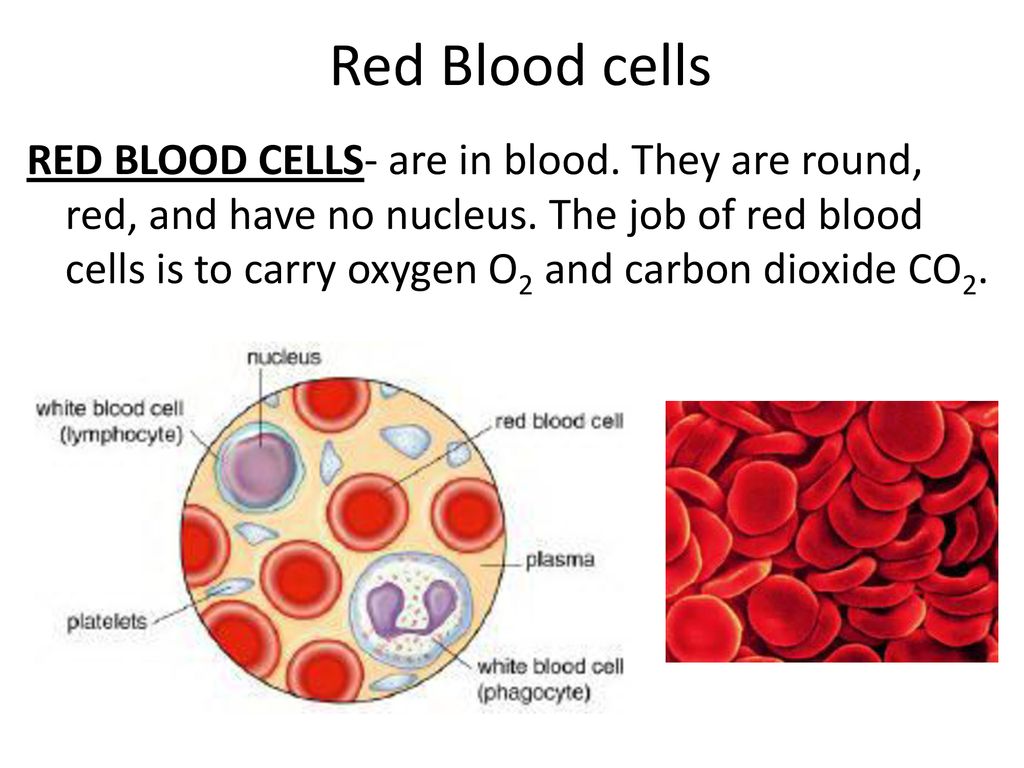
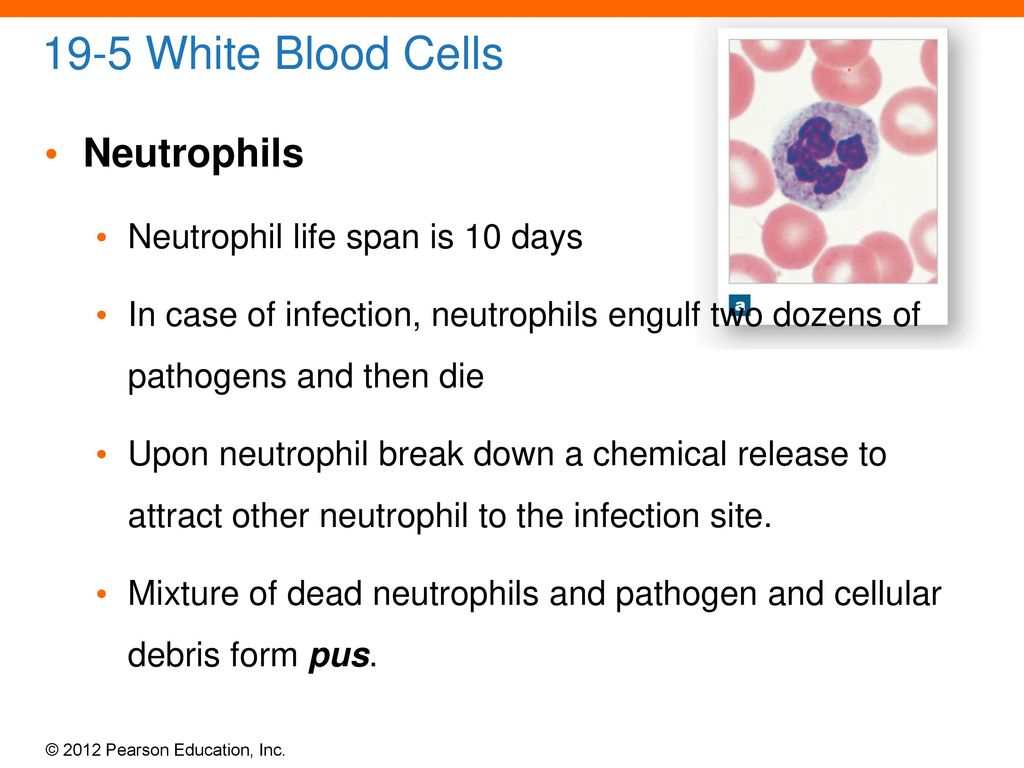 Examples include Kostmann syndrome and myelokathexis.
Examples include Kostmann syndrome and myelokathexis.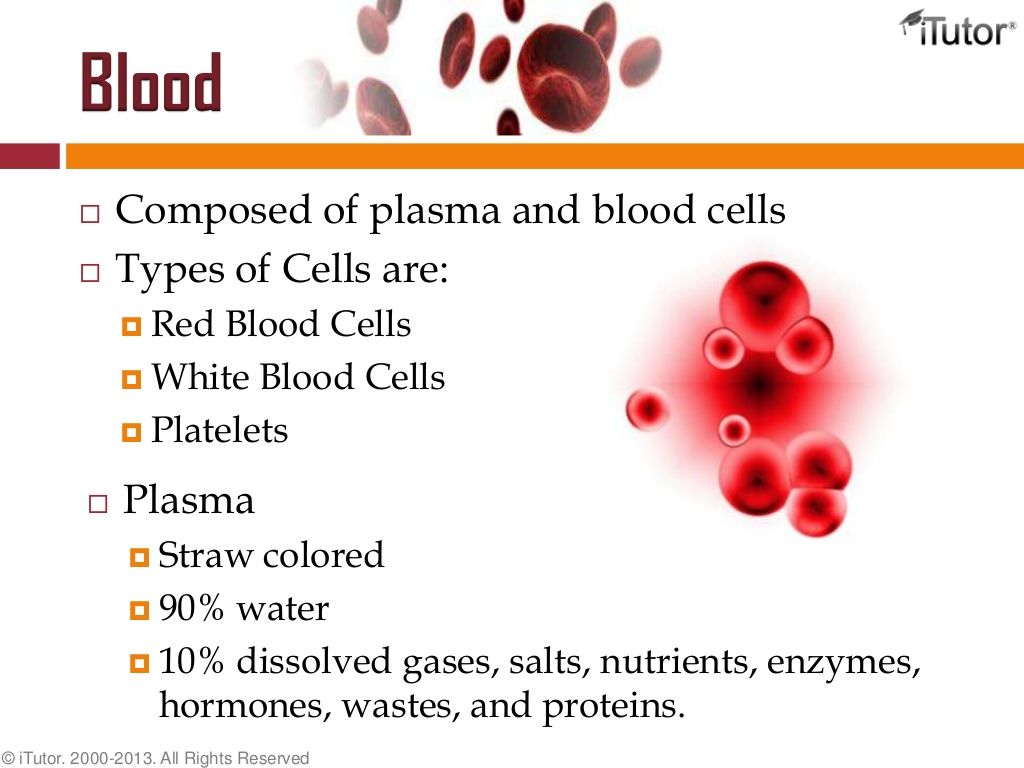
/blood-flowing-in-veins-red-and-white-blood-cells--1136593482-f5439d34be7c40a1bb7a2330b036b7e1.jpg)
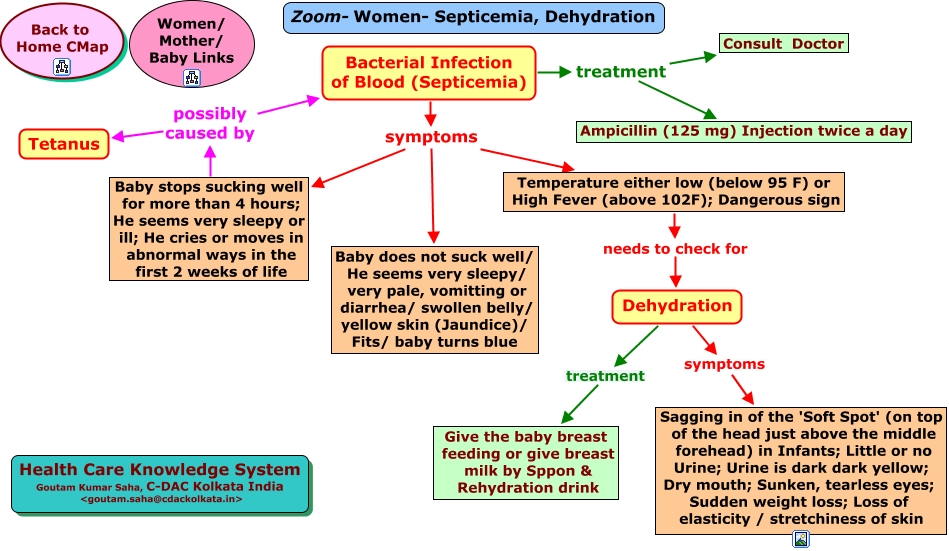 5 x 109/L more closely
5 x 109/L more closely